In this article, I am going to share with you everything you need to know about white hat SEO, and the best white hat SEO techniques in a step-by-step tutorial.
In fact, you will learn exactly how you can optimize your website from beginning to end with only white hat SEO tactics like link building, keyword research, technical SEO, and the best techniques for each of these strategies.
And without further due, let’s get started:
What is White Hat SEO?
White hat SEO is an approved set of tactics by search engines such as Google or Bing for SEOs in order to increase website visibility and ranking on search engine result pages (SERPs) the right way to not be penalized.
It is the right way of doing SEO for your website and leading SEO agencies, top-ranking websites in any niche, and SEO professionals are often only practicing white hat SEO strategies for themselves and their clients to avoid risk and get maximum results from SEO.
Why Do You Need White Hat SEO?
Using only white hat SEO has numerous benefits and if you are reading some leading SEO industry blogs then probably they are using only white hat SEO tactics as well to rank their website in SERPs.
So, let me share with you 3 main reasons why you should implement white hat SEO for your website as well:
Reason #1: The Only Way to Not Get Penalized
The first reason and probably the most important why you should start with white-hat SEO is that it is a 100% risk-free way to increase your website visibility and traffic.
White hat SEO is focused only on using those techniques that search engines recommend in their search engine guidelines. These tactics are specifically aimed to help their ranking algorithm to recognize your content, better understand what’s your website about, and asset it for ranking.
Therefore, there is no risk of getting penalized by search engines like Google using white hat SEO as you are playing by their rules.
Reason #2: White Hat SEO Drive Best Long-Lasting Results
The second reason why you should start with white hat SEO is that it delivers long-lasting results and steady growth over time.

As you can see, white hat SEO can deliver some great results if you stick with it over time. And as you keep practicing it you should see steady growth even if Google brings new updates.
From my experience, doing only white hat SEO, I have seen the biggest spike in traffic and visibility whenever Google launched a new algorithm and update which even more prove that white hat SEO is the best way to grow your website in long run without worrying about upcoming Google algorithm updates.
Reason #3: It’s the Cheapest Way
And the last reason I want to mention why you should start with white hat SEO is that it is the cheapest way to get your website going.
As you will see, white hat SEO strategies can be done absolutely for free without paying for any software or services.
However, on the other site, black hat SEO strategies often will cost you some money, depending on the strategy you choose.
For example, buying links that pass PageRank from an SEO agency, which is considered a strictly black hat SEO strategy, can cost you hundreds of dollars per link depending on the link placement.
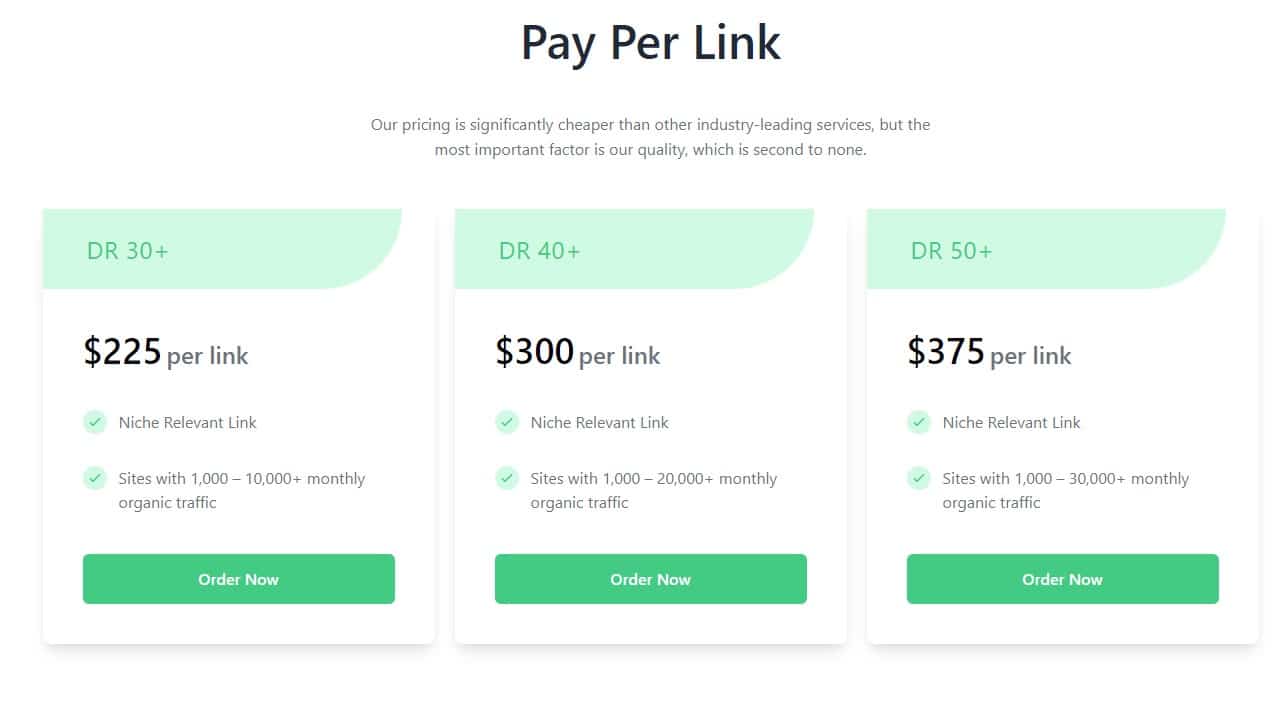
However, when it comes to link building, it can be very expensive even if you are doing white hat SEO link building strategies as you will need to subscribe to different software’s and hire SEOs to do it at scale, but you can still do it very cheaply or even for free with investing more time.
Of course, there are black hat SEO strategies that will cost you nothing as well, however, those will not yield any results and just waste your time. I am talking only black hat SEO strategies that are designed to “trick” search engines to give you some exposure.
However, every white hat SEO technique can improve your website visibility and search ranking, and often they are free of charge. Only you will need to acquire the knowledge.
And here in this article, you will learn the best white hat SEO techniques that you can apply for your website in order to improve your website visibility, ranking, and organic traffic.
White Hat SEO vs Black Hat SEO
So, by now you might already understand that white hat SEO is the ethical way and black hat SEO is the risky way to optimize your website for better ranking.
However, to have the full picture of these two types of SEO, let me share with you the three main differences between white hat SEO and black hat SEO and give you an idea of why still some people decide to go with black hat SEO despite the risk of being high.
Difference #1: White Hat SEO is Hard and Black Hat SEO is Easy
The first difference between these two types of SEO is that white hat SEO is super hard, labor-intensive while black hat SEO can be relatively easy especially if you are doing SEO for clients and you need to deliver quick results.
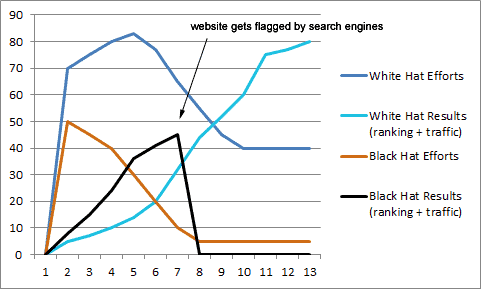
When it comes to using only white hat SEO strategies, it can be really intensive for you or your team to build a website that ranks in the top position and drives a lot of high-quality traffic as the scope of white hat SEO strategies, including off-page SEO is very limited.
And because white hat SEO is the safe way to rank your website, businesses and people will be mostly focusing on it, making it super competitive and even harder to rank your website in search engine result pages as you and your competitors will be using the same white hat SEO tactics to rank your website.
However, on the other side, black hat SEO tactics can be relatively easy and less competitive. Just buying links to your website or participate in link exchange are some of the easiest ways to improve the ranking for your website.
Also, using AI for content automation is definitely way easier to create content for your website rather than writing it yourself or using article spinning technology to have rewritten content from other websites that appear to be new content and pass plagiarism tests.
So, this is definitely one of the biggest differences between white hat SEO and black hat SEO, and why still so many people doing black hat SEO.
Difference #2: White Hat SEO Takes Long Black Hat SEO Takes Short to See Results
The second difference between white hat SEO and black hat SEO is that to see results from white hat SEO, takes such a long time, while black hat SEO can deliver results in a much shorter time.
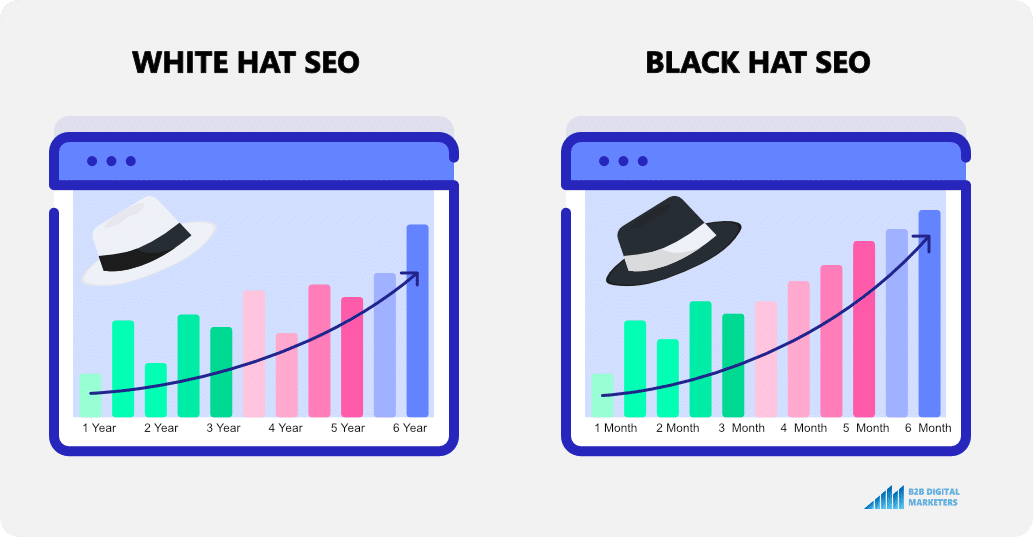
Unfortunately, everybody wants the quick wins and shortcuts to success and in SEO it’s no different. Those that want to see quick results often start using Black Hat SEO strategies such as PBNs (private blog networks) to get hundreds or even thousands of backlinks in a matter of days.
However, those do not work anymore since 2014 Google has hammered on PBNs, yet there are still plenty of other black hat SEO tactics that can get you some quick wins as mentioned buying links, content automation, etc.
Difference #3: White Hat SEO is Long Lasting and Black Hat SEO is Short Lasting
And the last difference I want to mention for these two types of SEO is that white hat SEO is long-lasting while black hat SEO often works only for a short amount of time.
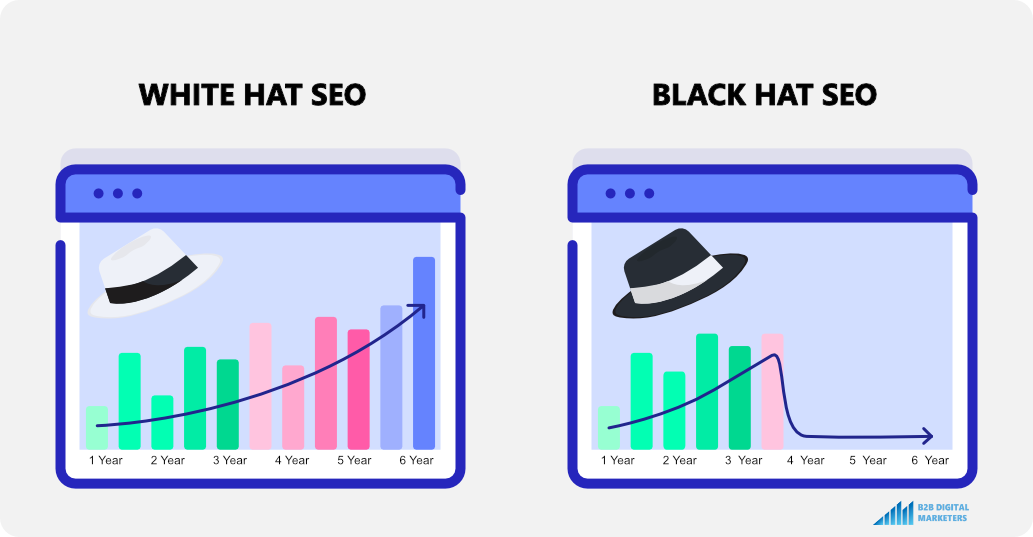
While those that apply black hat SEO see better results much faster, these results don’t last long and after a while, Google will catch up on your dirty tactics and will penalize your website which often ends up wiping the entire website traffic and ranking.
While those that using only white hat SEO techniques will see growth year after year and often see no negative impact from Google algorithm update or even see improvements in website traffic and ranking like I saw with my website and my clients.
And if you are thinking of outsmarting search engines by starting with black hat SEO strategies to get quick wins and then quickly switch to white hat SEO strategies to not get penalized, make no mistake as you will get still penalized and your results with not come even close to when using only white hat SEO techniques.
And here you can see a table of differences between white hat SEO and black hat SEO:
| White Hat SEO Tactics | Black Hat SEO Tactics |
|---|---|
| Relevant Content | Duplicated Content |
| Relevant and Unique Page Titles and Meta Description | Keyword Stuffing |
| Relevant Internal Links | Cloaking or redirecting users to another page |
| Mobile Optimized and fast loading website | Purchasing links that pass PageRank |
| SEO Optimized Images | Comment spamming |
| Keyword targeting and LSI Keyword Optimization | Link farming and exchanging links |
| Lean code and well-structured markup language | Stealing content and rewriting it |
| Producing high-quality content by subject matter experts | Using technology to automate content production |
| Focusing on experiences and industry expertise to create relevant content | Using negative SEO to harm competitors |
| Building authority and trustworthiness to dominate. | Invisible text |
| Differences | Differences |
| Using soft strategies that are approved by search engine guidelines. Often very competitive. | Using aggressive strategies and tactics to gain quick results. Often easy to do. |
| It focuses on long-term investment, especially high-quality content. | It only focuses on tricking search engines to gain quick results. |
| Using well research keywords and LSI keywords and optimizing on-page SEO, focusing mainly on relevancy. | Using spammy and keyword stuffing tactics to trick website spiders and gain authority. |
| Building links with high-quality content. | You are exchanging or buying links. |
| It is used for long-term goals and benefits. | It is used for short-term goals and benefits. |
| Ethical way of doing SEO. | Unethical way of doing SEO. |
So, these are some of the most profound differences between and black hat SEO and white hat SEO and now let’s move to best white hat SEO techniques:
Best White Hat SEO Techniques for Your Website
While some say white hat SEO is fairly limited and you compete toe-to-toe with white-hat SEO strategies, I am going to share with you some of the best and advanced techniques that can give you an edge over your competitors across different SEO techniques.
Let’s get started!
Step #1: White Hat SEO Techniques for Technical SEO
The first step in starting with white hat SEO is to get your technical SEO up and ready because your website needs to be ready to receive traffic, otherwise, there is no point trying to generate traffic if your website’s technical aspects cannot handle that.
So let me share with you some of the most important technical SEO techniques for white hat SEO:
Technique #1: Website Audit
The first and one of the most important parts of technical SEO is to have scheduled website audits on a weekly or monthly basis to prevent any technical and on-page SEO errors hurting your website performance.
Because poor website health can cause you to lose traffic, ranking, and search visibility.
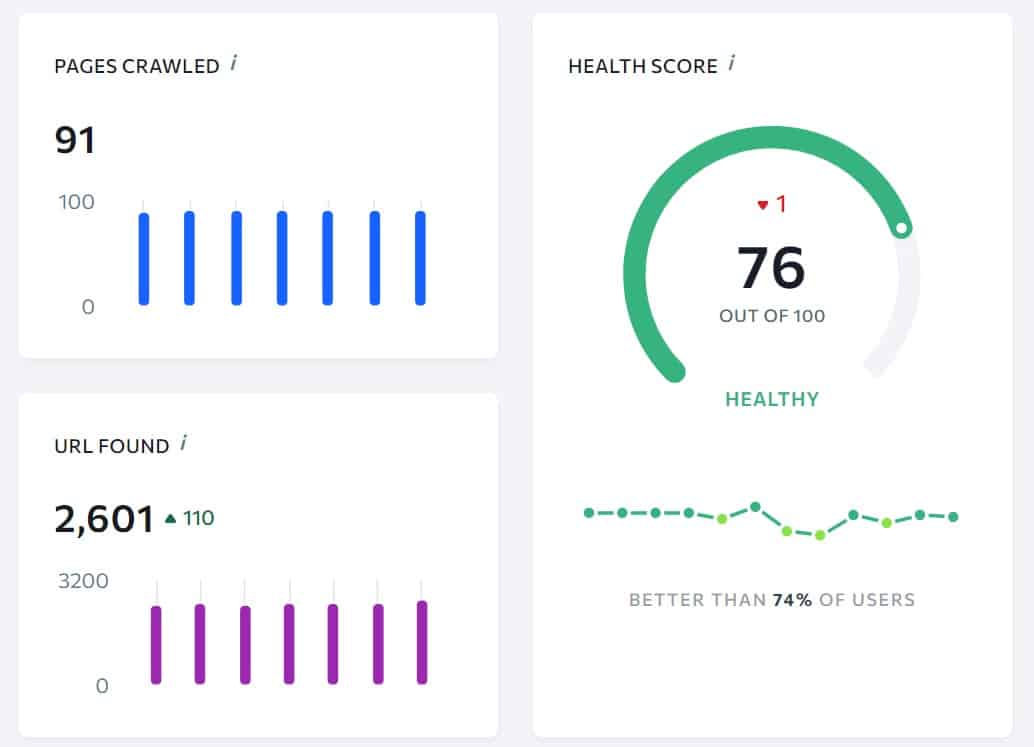
Website audit helps you to regularly check your website for any technical, content, and on-page SEO issues and then give you a detailed report to help you to fix any errors and issues on your website.
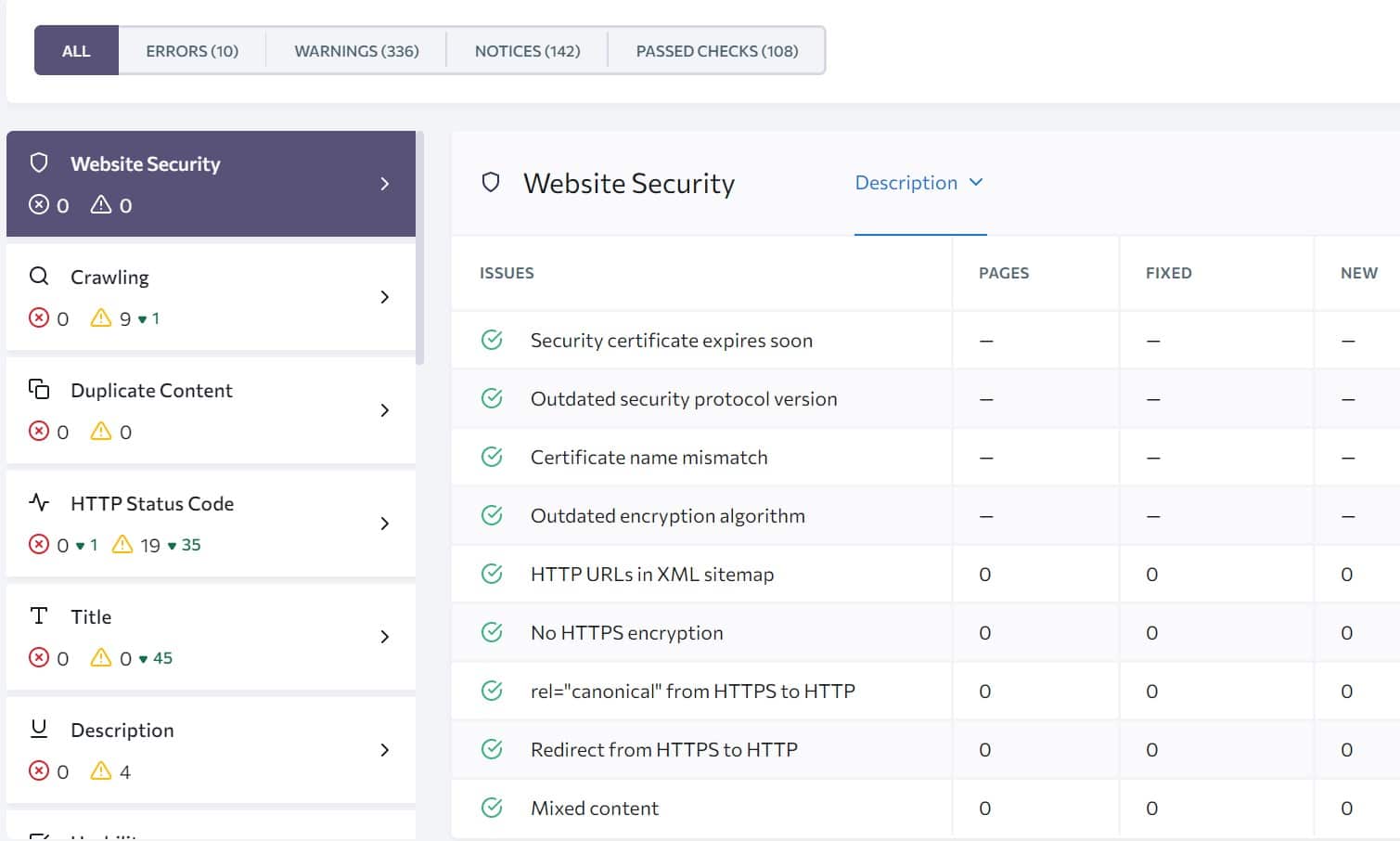
Having an SEO tool like SE Ranking that performs a thorough website audit is essential for anybody with a website, whether you are a business, freelancer, professional, or blogger.
Within minutes, the tool can scan a website of any volume and build a detailed report on its technical health. SE Ranking checks every page of the website against 120 parameters that impact SEO.
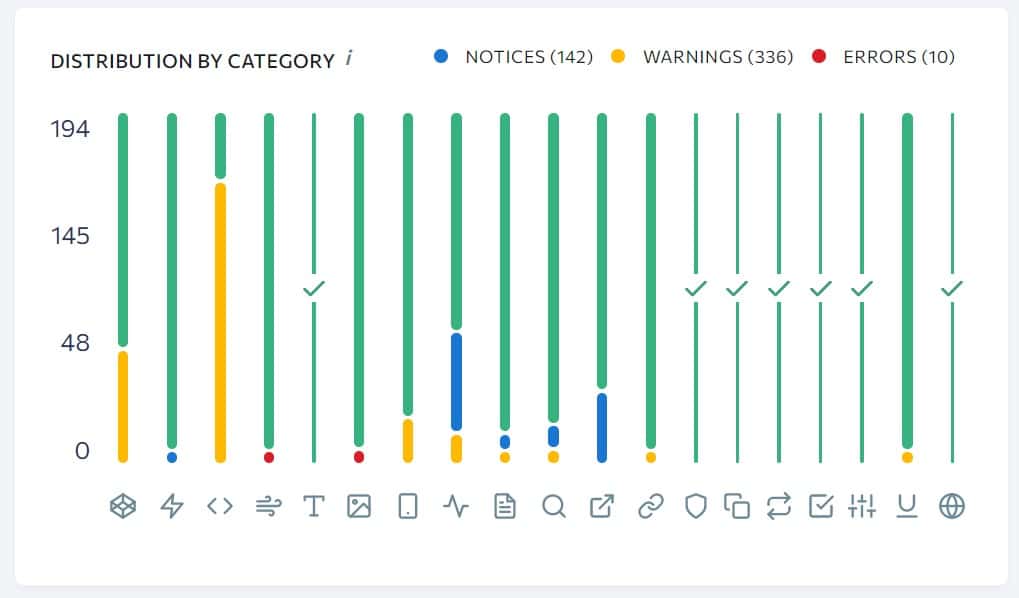
And especially less experienced SEOs will love website audits from SE Ranking because they get all the necessary guidance they need. The report shows what errors need to be fixed ASAP and it provides checklists on how to accomplish that.
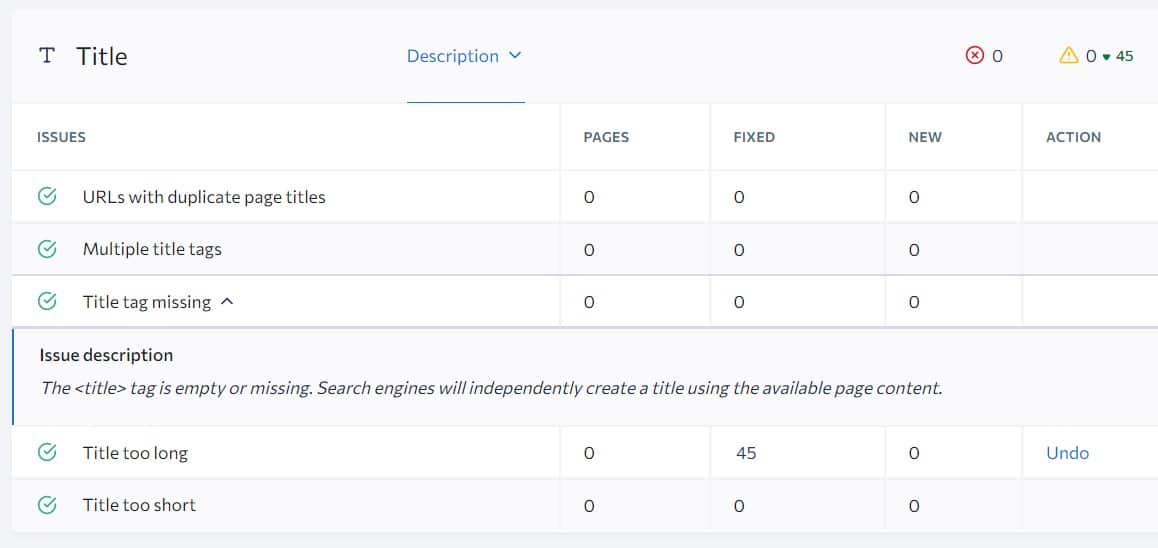
And of course, SEO Pros can ignore the tips and immediately check which pages are impacted by every detected issue.
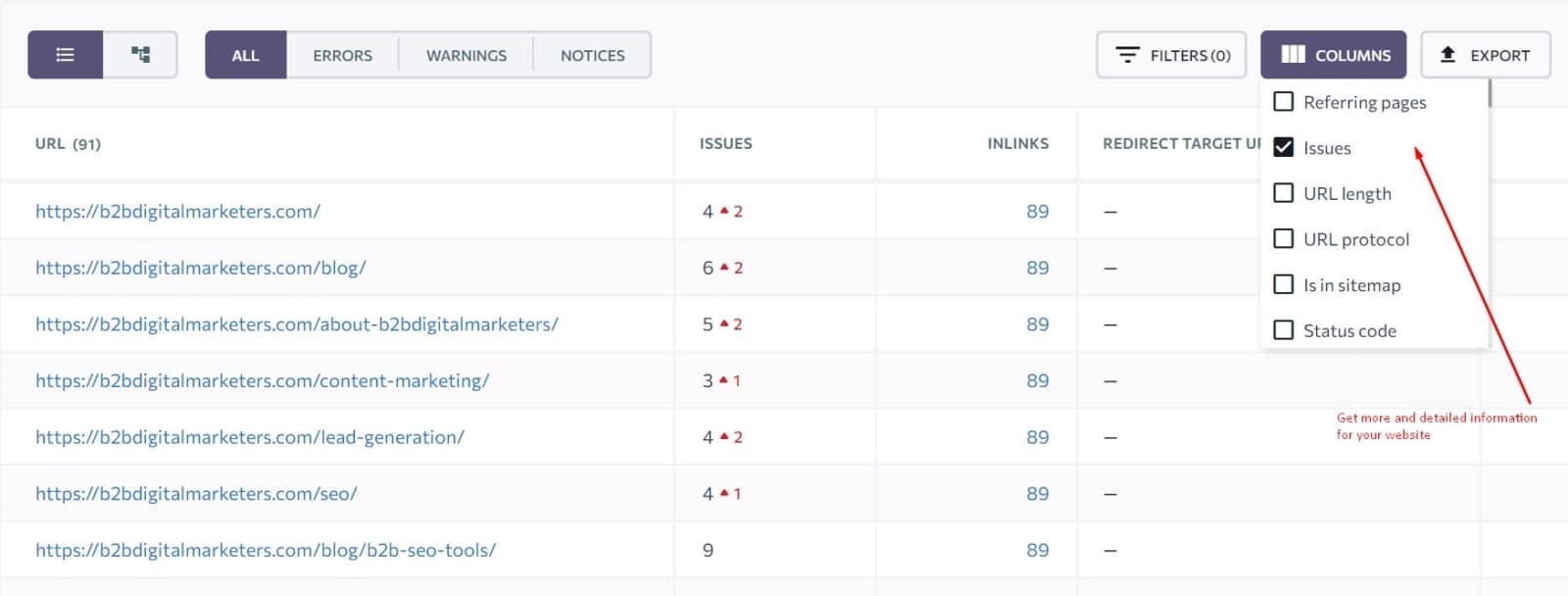
Technique #2: Optimize Site Architecture
Another very important part of your technical SEO, website, and white hat SEO is to optimize your website site architecture.
SEO Site architecture helps both users and search engines.
For users, it is easier to find the information they are looking for on your website, which improves time on a website, reduces bounce rate, increases conversion rates, and improves your overall user experience (UX).

And search engines can easier and faster crawl your website, better understand your pages and their relationships, which improves ranking and lastly, you will reduce the number of crawls needed to crawl your website.
I recommend you keep the most important pages in crawl depth 3 and higher As pages with crawl depth 4 and lower typically perform poorer in SERPS as search engines assume they are less important.
To check your crawl depth, you can use SE Ranking Website audit. However, they already counting homepage as crawl 1, so in this case, the range is between 1-4 for SE Ranking and not 0-3 as for most SEO tools.
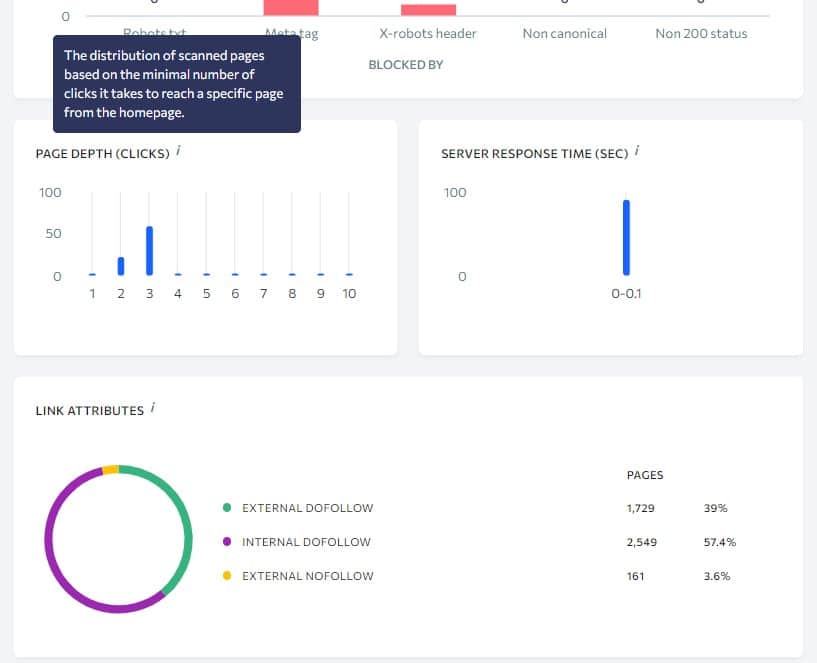
Technique #3: Page Speed Optimization
The next important white hat SEO technique that you should definitely implement is to optimize your page speed.
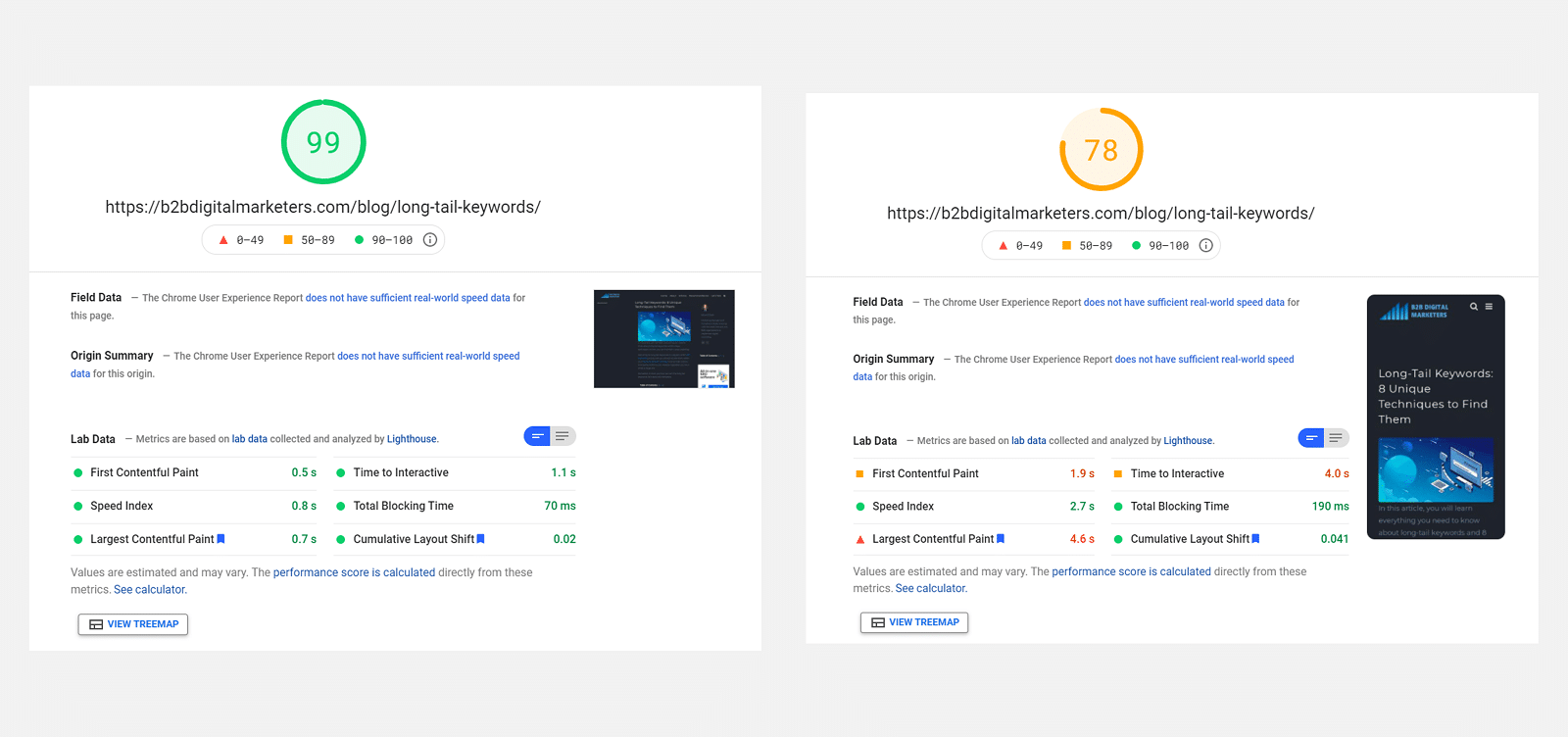
In 2010, Google already said page speed was a ranking factor for desktop searches only. In 2019, page speed became important for mobile as well. Then in 2021 with Core Web Vitals roll out and other updates, page speed has become more important than ever before.
Therefore, actively measuring your page speed and improving it should be one of your priorities as well. You can use tools like Google PageSpeed Insights, GT Metrics, or Pingdom Website Speed Test to measure your page speed and get actionable insights.
However, these tools can be complicated to understand and take action, so let me share with you some of the best practices for page speed:
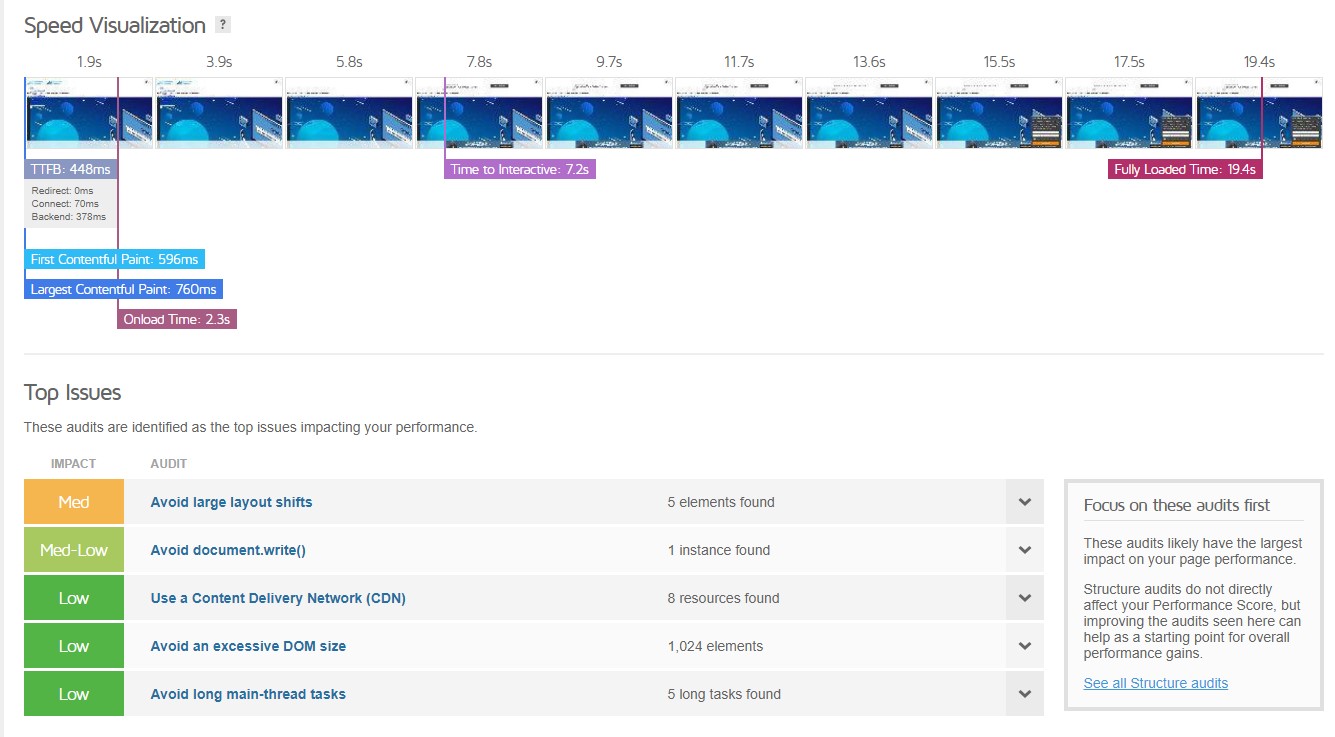
- Implement CDN such as Cloudflare
- Use caching plugins such as WP Rocket to apply technical SEO best practices such as:
- Minify CSS, JavaScript and HTML
- Reducing render-blocking
- Enable compression
- Use image plugins like Imagify to optimize your pictures
- Opt-in for better web hosting if budget allows.
Technique #4: Have Mobile-Friendly Pages
And the last important technical SEO technique for white hat SEO is to have mobile-friendly pages.
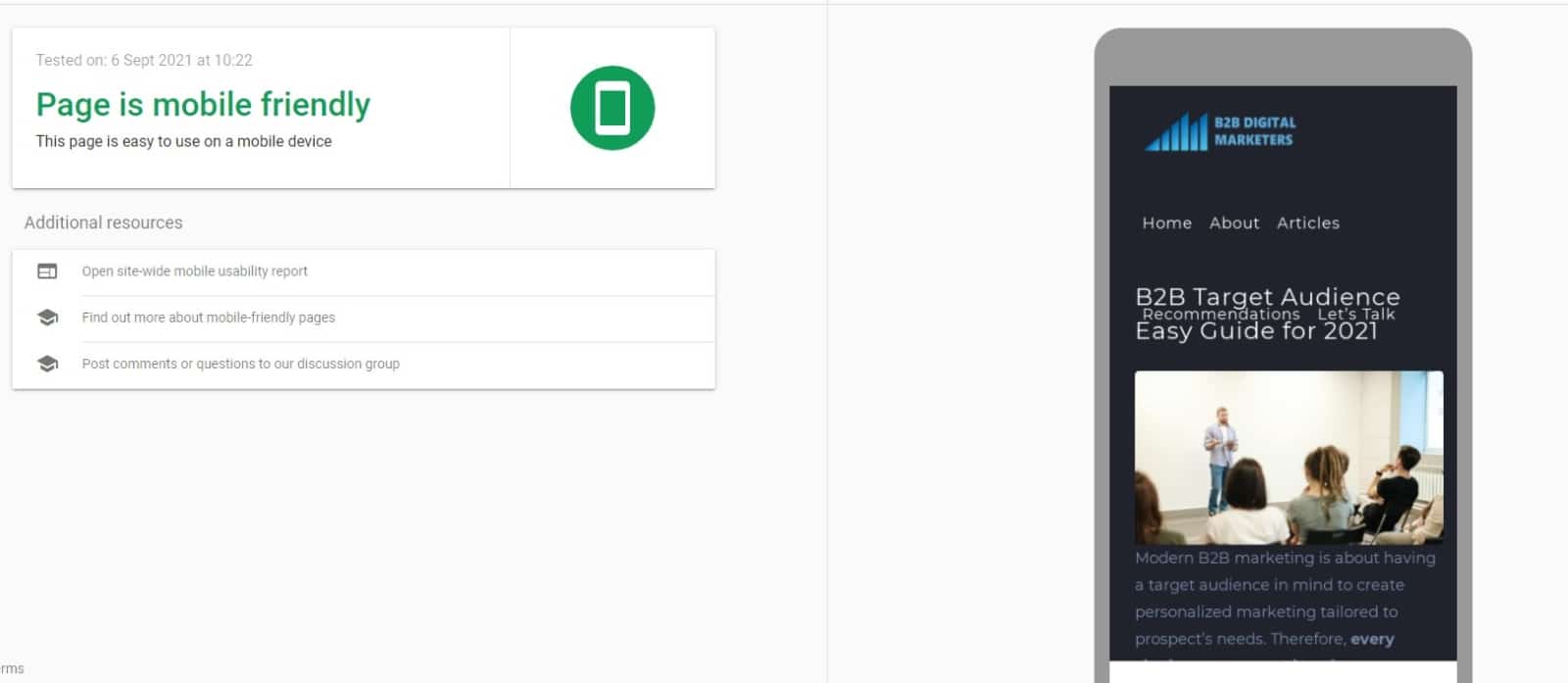
According to researches such as from Statista, mobile traffic is higher than desktop traffic since Q1 2017. This means if your website is not mobile-optimized, you are losing over half of the potential traffic you could drive.
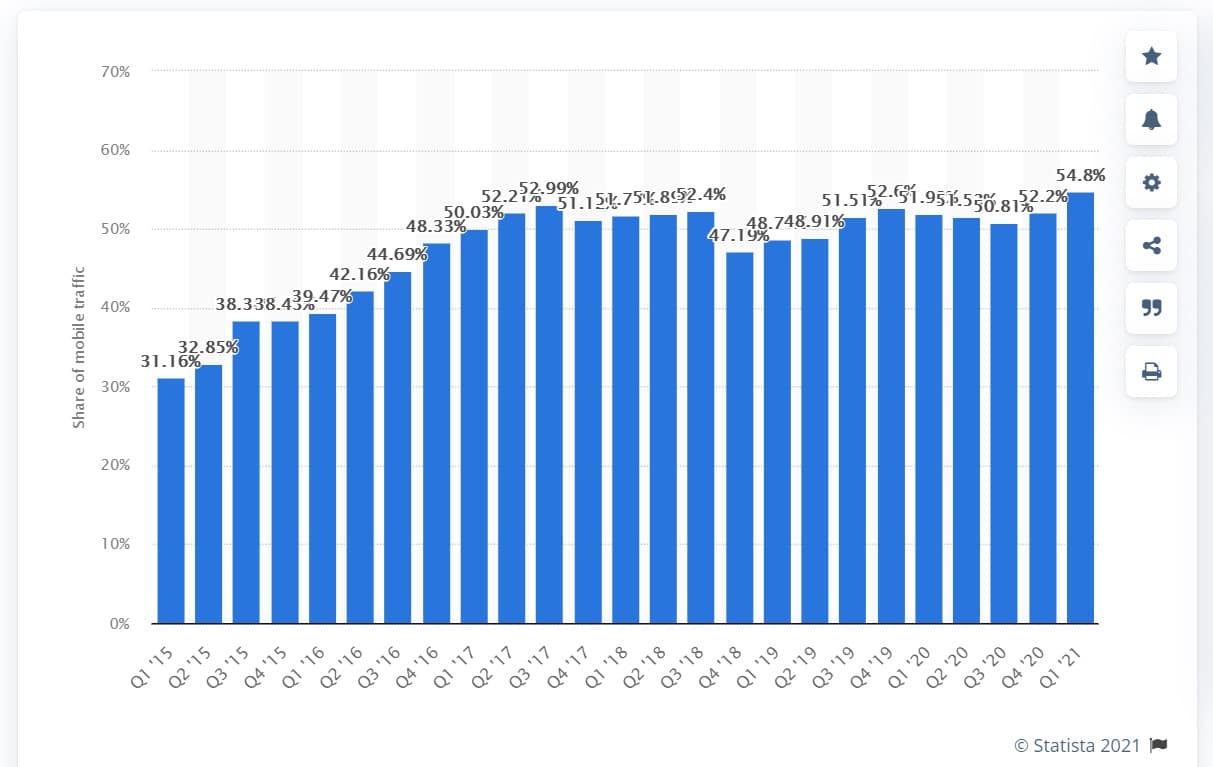
And this becomes even more significant for local searches as in the USA, 94% of people with smartphones search for local information on their phones. Interestingly, 77% of mobile searches occur at home or at work, places where desktop computers are likely to be present.
Step #2: White Hat Techniques for Keyword Research
Keyword Research is arguably one of the most important white hat SEO strategies for your website.
Keyword research is arguably one of the most important strategies to grow your organic traffic with SEO. 71% of B2B researchers begin their research with generic Google searches and then start becoming more specific with their search as their knowledge improves.
Targeting relevant SEO keywords in your niche and industry on your website will improve your overall Google E-A-T score as the more content you produce and of course better quality, the more Google will see you as authoritative, trustworthy, and expert in your industry.
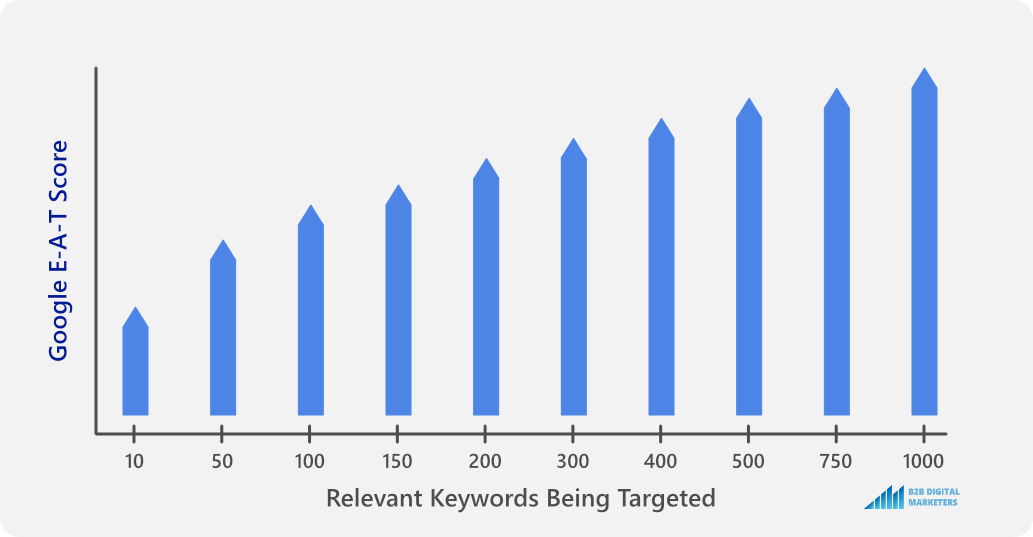
It also helps your website ranking as you will rank for more relevant search terms to your niche, industry, and your brand. And as you will be targeting more keywords, naturally your online presence will grow.

And according to Ahrefs study, every single keyword you are targeting can rank for hundreds and even thousands of keyword variants.
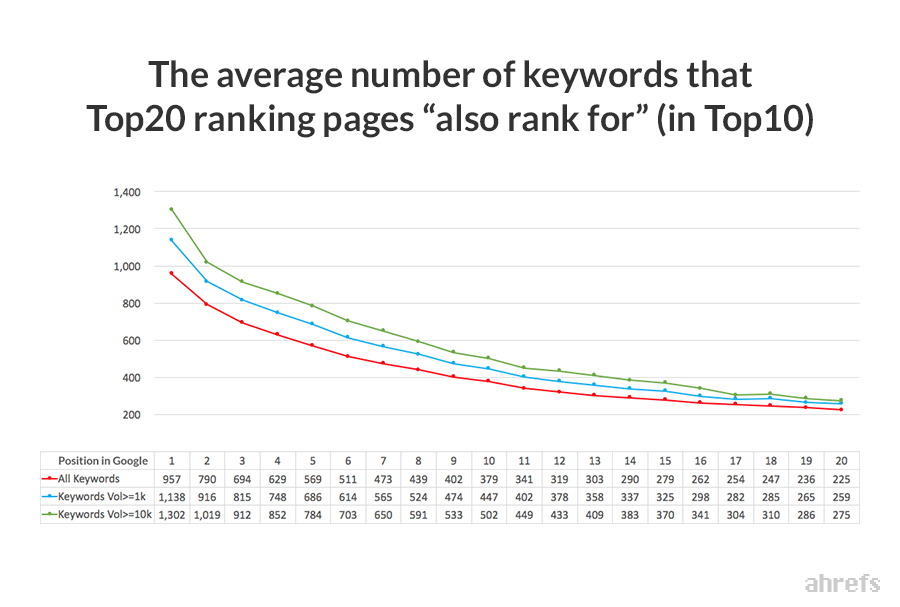
So, once your website is ready to receive traffic, let me share with you some of my favorite white hat SEO techniques for keyword research:
Technique #1: Perform Competitor Keyword Analysis
The first and probably one of the most popular ways used by SEO experts to get keyword ideas is to perform competitor keyword analysis.
Keyword research is one of the recommended white-hat SEO techniques that you should apply to your website to improve your website visibility and ranking.
And there are many different tactics to do keyword research and competitor keyword analysis is one of them. This is a fairly easy do, yet very powerful strategy to find keywords ideas, so let me show you how to do it.
First, you need to create a list of competitors. To do that you can use SEO tools like SE Ranking Competitive Research tool and pop your domain there, select your target location, and hit “Analyze”.
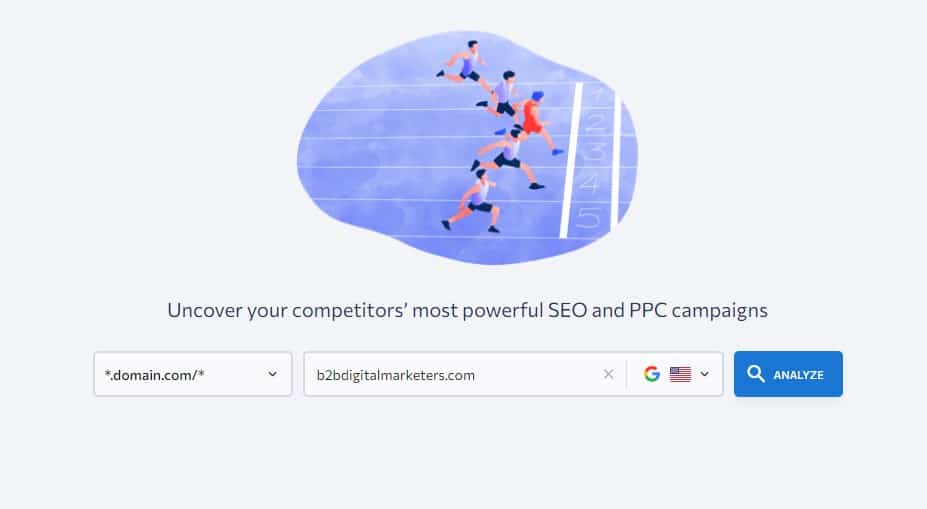
And then you select “Competitors” report.
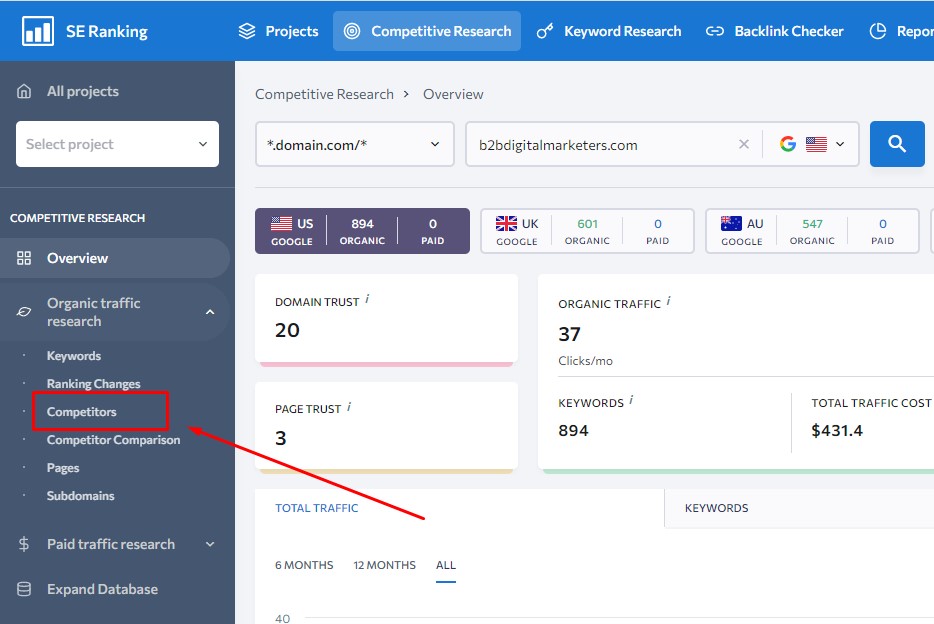
And here you will get a long list of competitors based on your ranking keywords. Obviously, the more keywords your website is ranking for, the better suggestions you will get.
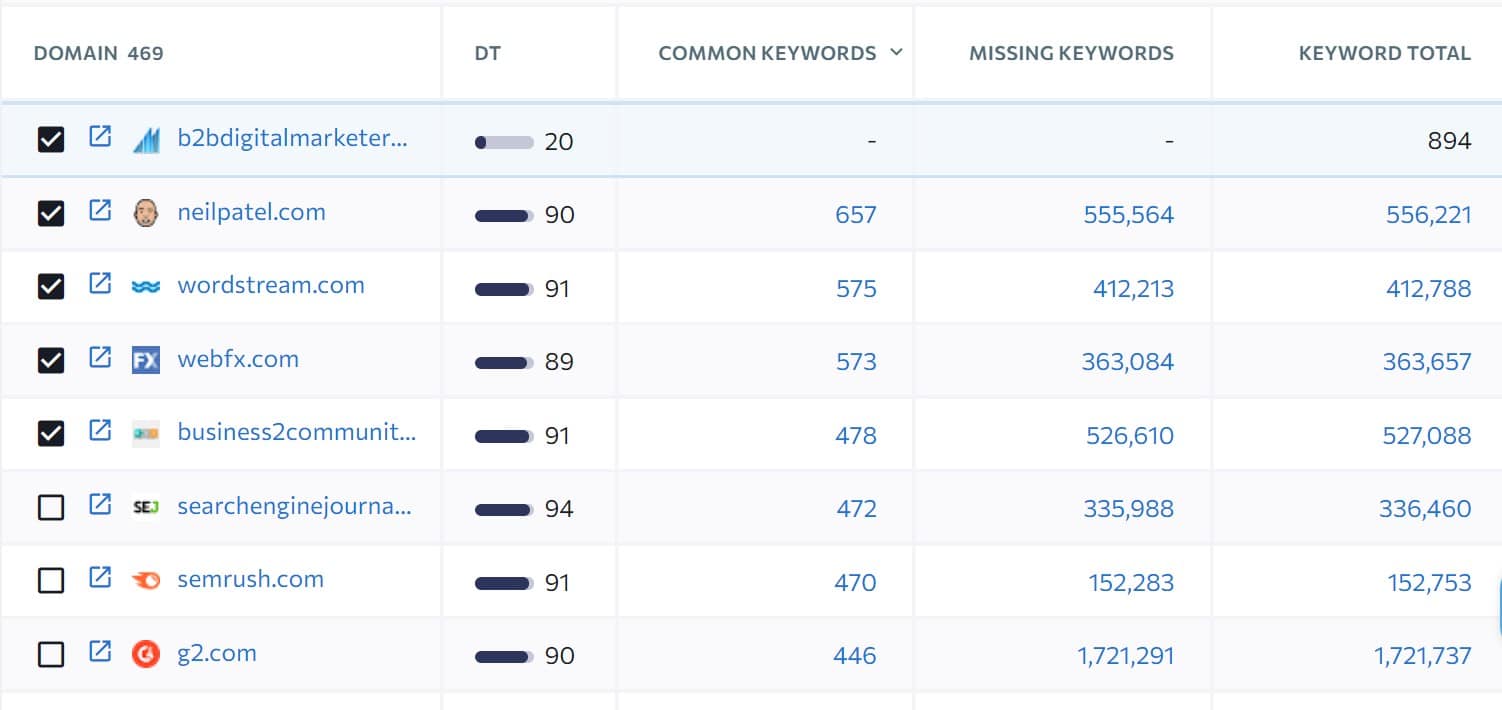
Alright, once you have your competitors list, then you can simply pop your competitor domain in the Competitive Research tool or you can just click on one of the three keyword reports “Common Keywords”, “Missing Keywords”, and “Keyword Total”.
I recommend you check the “Missing Keywords” report first.
Here you will get a list of all keywords your competitor domain is ranking for, but your website doesn’t. So now you only have to scan the keyword list to find any related keywords you want to target.
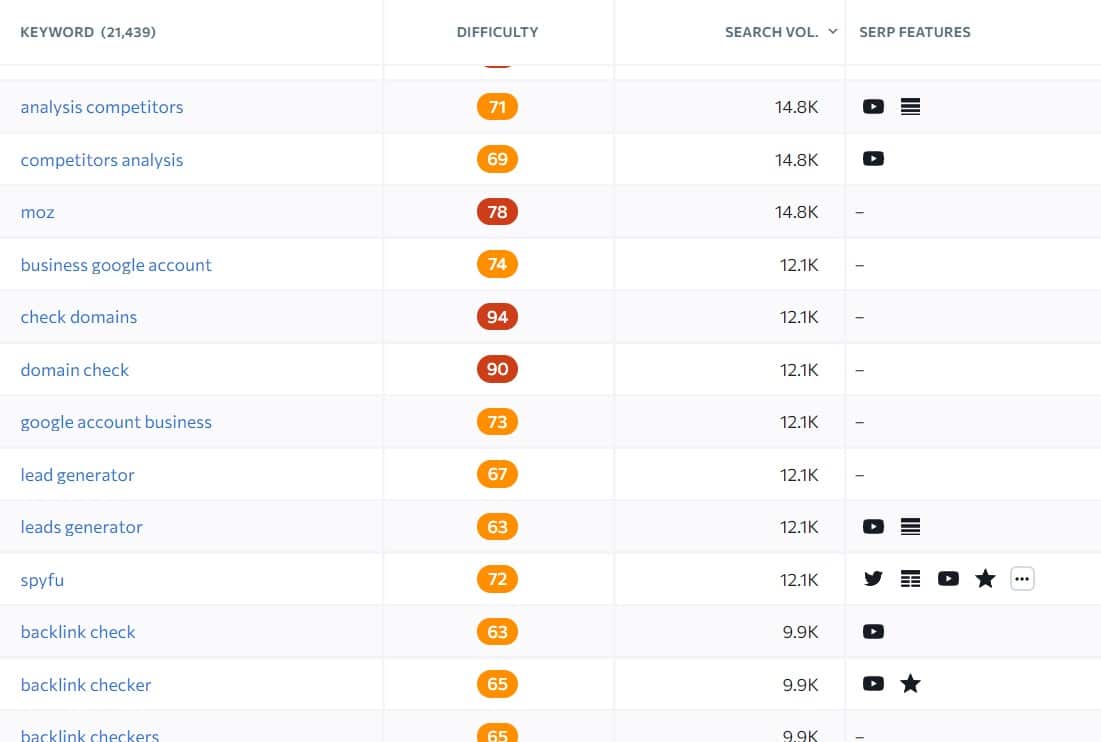
I especially like this technique for less authoritative websites as like this I can find keywords that drive organic traffic and target those keywords as well because if my competitors rank in top positions, I have a high chance to rank for that keyword too.
Technique #2: Finding Profitable Keywords
Another important white hat SEO technique for keyword research is to look for profitable keywords.
Driving traffic is a great sign that your website is doing well in SERPs. However, traffic doesn’t pay the bills and it all comes down to driving profitable traffic that converts as sales or leads.
Therefore, it is important to map out profitable keywords in your niche. I have a full tutorial on how to find profitable keywords in step-by-step that you can watch here:
However, let me give you a quick crash course on profitable keywords.
Step #1: You must understand your target audience’s buyer journey and the search intent of keywords.
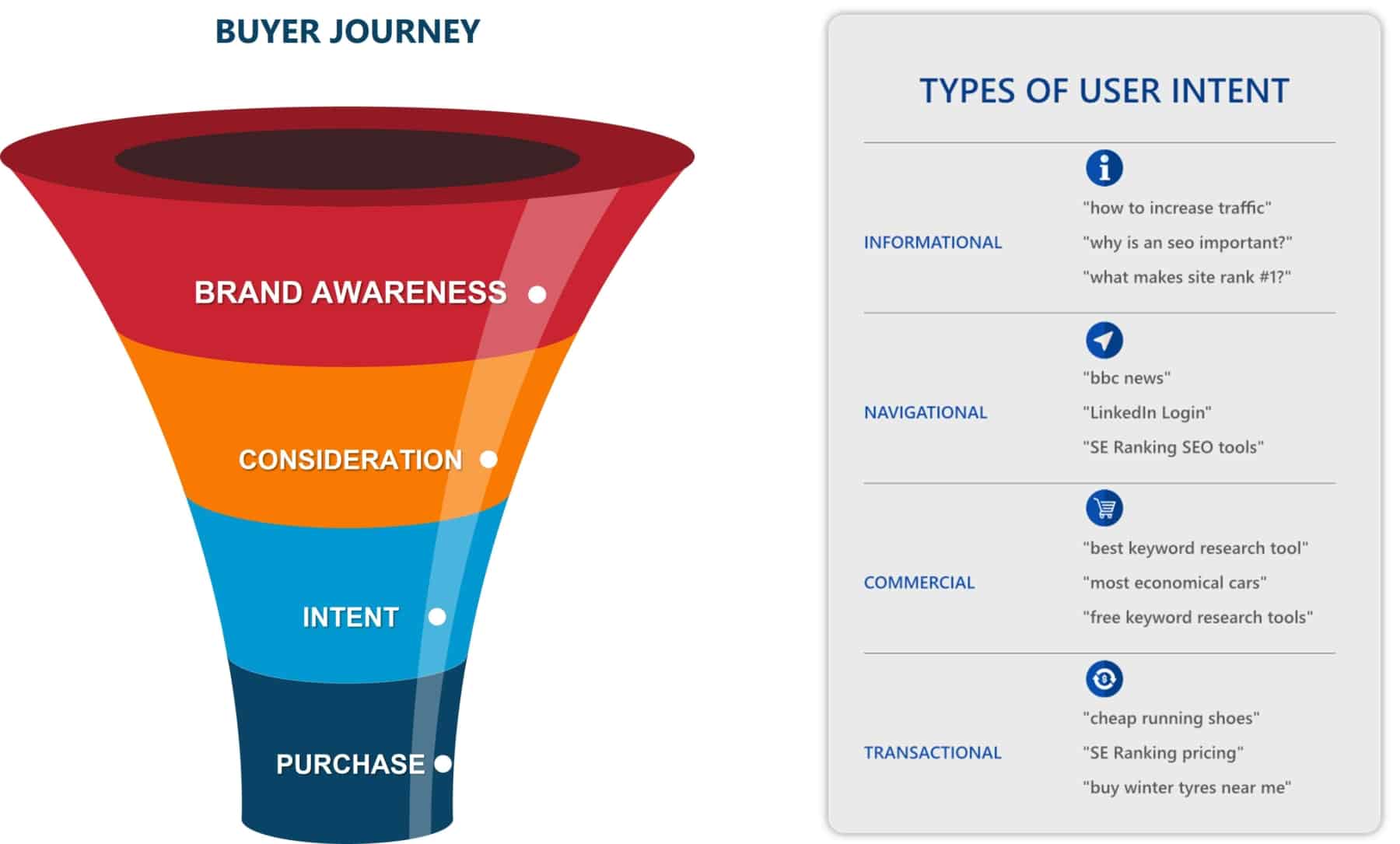
What you are looking for are keywords that buyers are using at the intent and purchases stage at the bottom of the buyer journey funnel. These keywords are having commercial and transactional user intent which means they are ready or almost ready to buy.
Step #2: You need to analyze keyword search intent you can check for keyword modifiers. Here is a table of common keyword modifiers for each search intent:
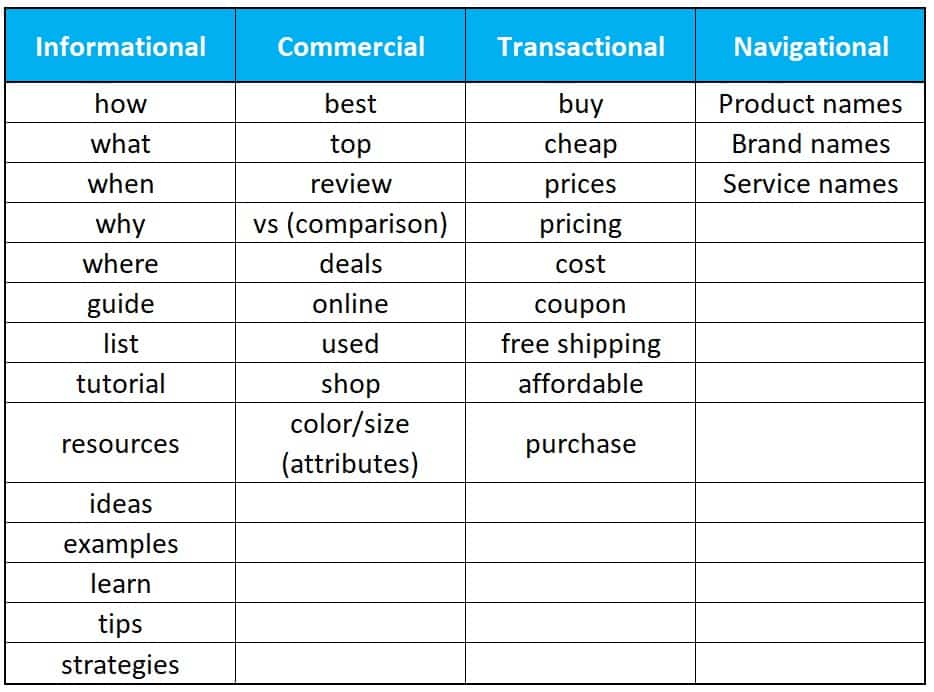
Often you can find these keyword modifiers with the keyword itself within the keyword research tool or within the title tag of the ranking keywords.
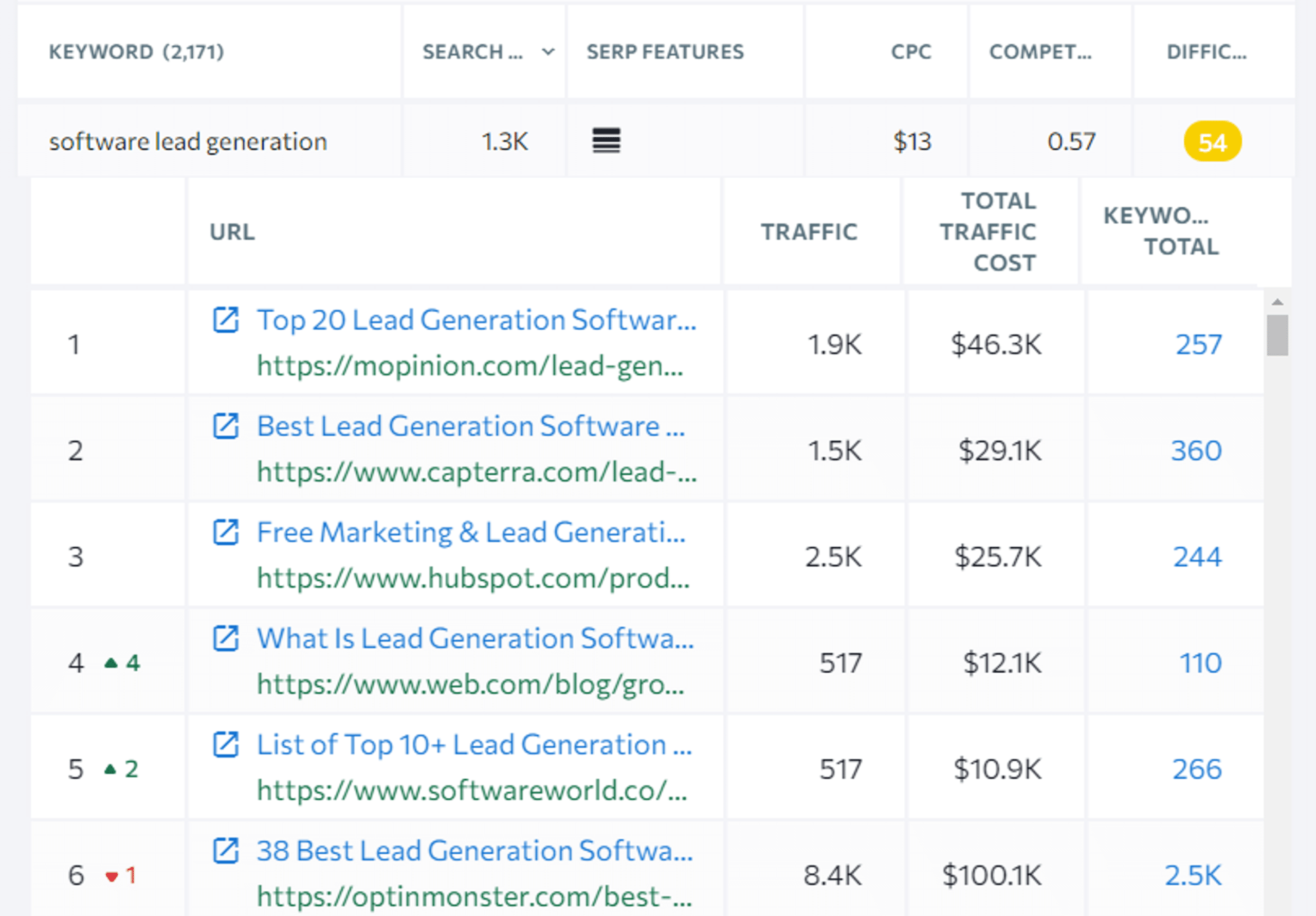
Pro Tip: Often profitable keywords are keywords of some products or services and their categories.
For example, in my niche SEO niche profitable keywords could be “keyword research tools”. As you can see most of the ranking pages have the keyword modifiers “best” “pro” or “free” (which represents the price and that shows transactional or commercial intent).
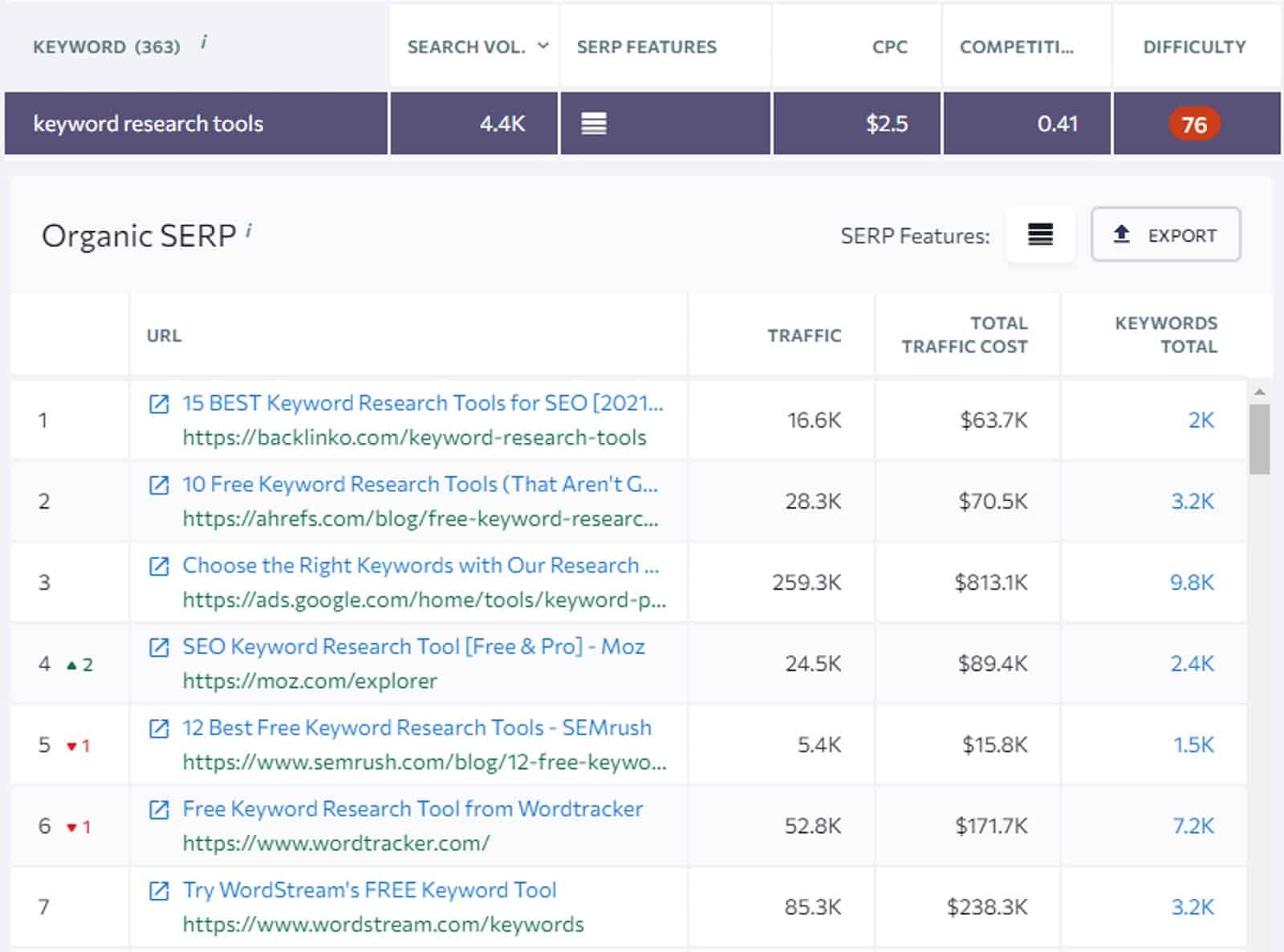
Or another example could be the keyword “house clean services” which has the word “services” which indicates users are looking for services, which already means transactional or commercial intent and the results in Organic SERP prove that.
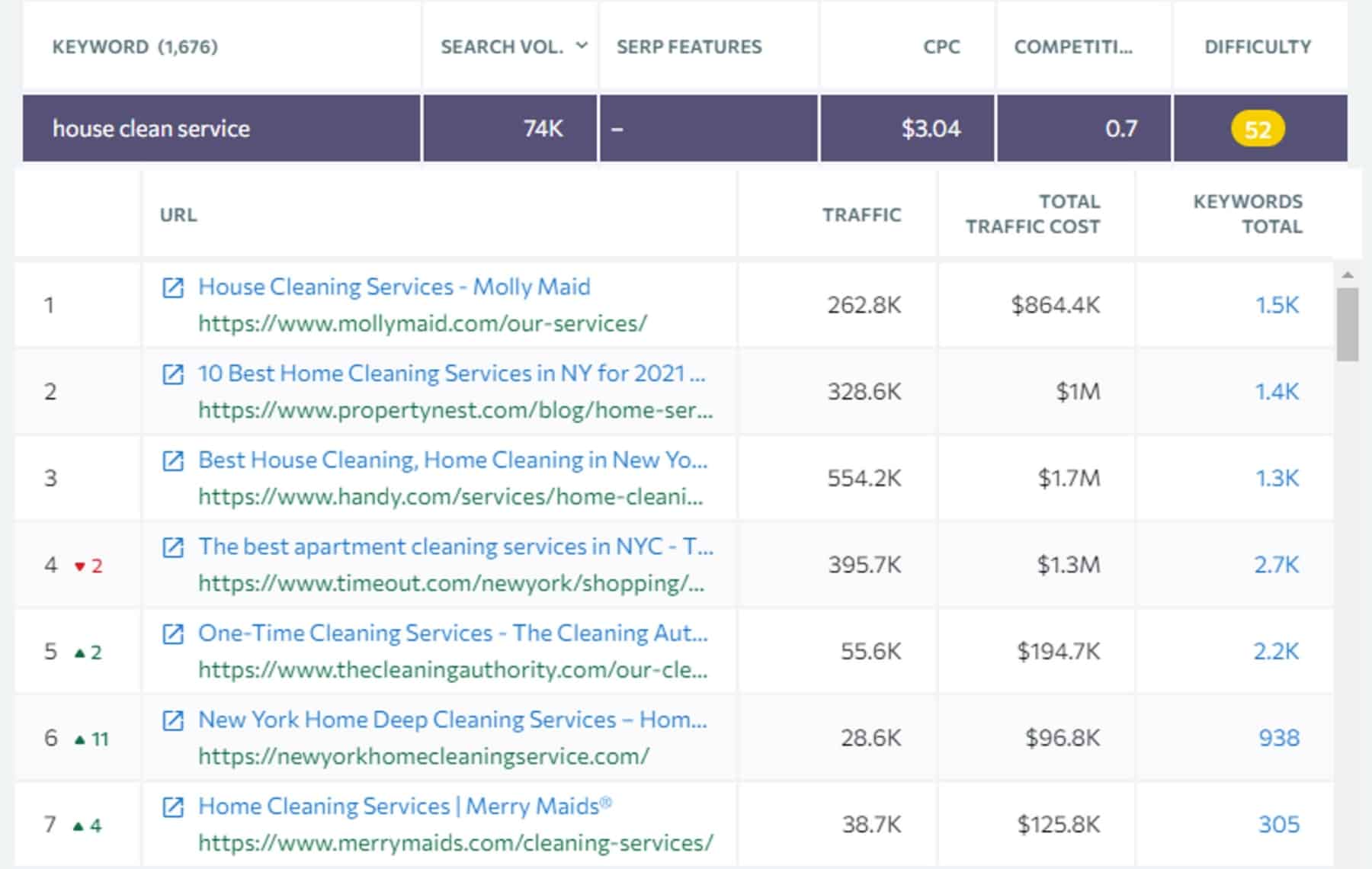
But then keyword like “cleaning gutters” has mostly informational intent with a bit of commercial intent based on the organic SERP. Because you can see mostly keyword modifiers “how” and predominately educational content with some service pages.
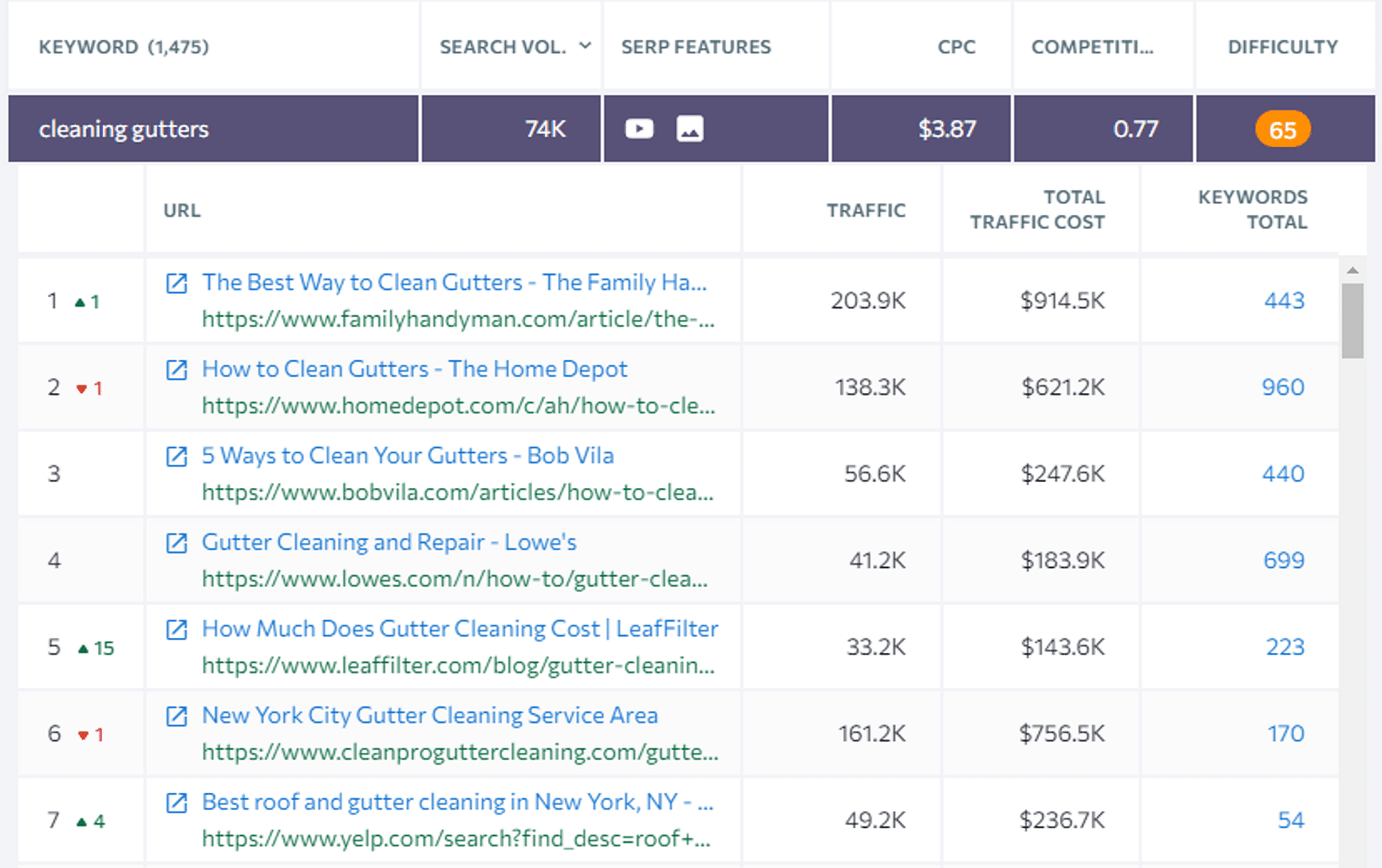
So, when you are analyzing keywords remember to look for common clues that show whether the keyword is profitable or not.
It all comes down to the search intent. Understanding search intent is critical for keyword research, especially for finding profitable keywords.
Technique #3: Finding Long-Tail Keywords
Another important white hat SEO technique for keyword research is to find long-tail keywords.
Long-tail keywords are super important for your website regardless of whether you are a large or small website. Finding and targeting long-tail keywords can help you boost your website traffic and conversion rates tremendously and improve your website authority.
And to find long-tail keywords there are numerous ways how you can do that, so let me share with you one particular way that I really like and that is to analyze your ranking keywords.
To analyze your ranking keywords, you can use Google Search Console where you will get the top 1,000 ranking keywords.

I like this method because you will get accurate almost up-to-date data about your keyword’s impressions, ranking, traffic, and CTR from Google.
And if your website is already ranking for long-tail keywords without you targeting it, then it is a great sign that you should create a dedicated piece of content to target the keyword as you most likely will improve your ranking and traffic from that keyword.
However, you only see your top 1,000 keywords in Google Search Console. So, if you rank for more keywords then you can run a competitive research tool like SE Ranking and you will get a much bigger list of keywords.
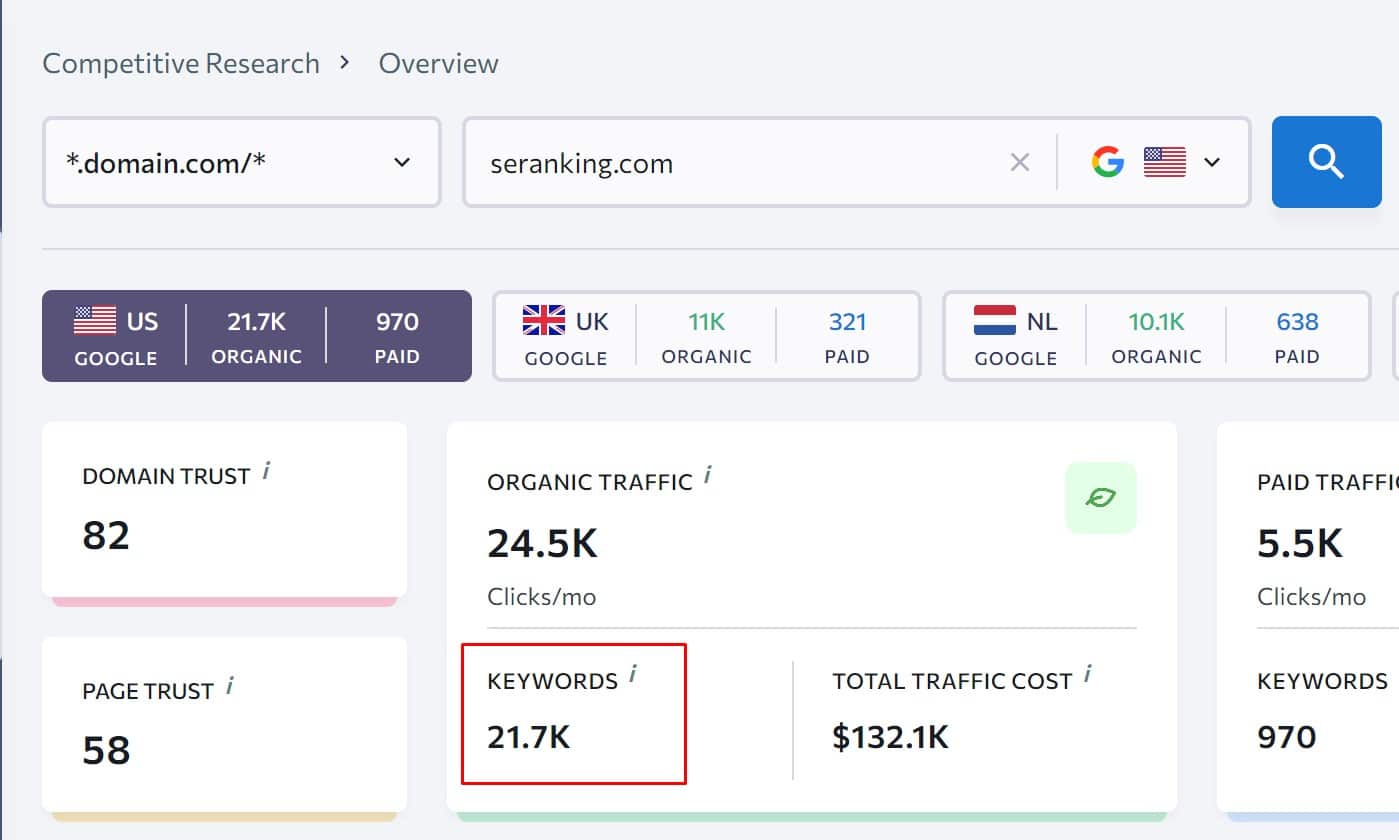
So, when you open up the “Keywords” report you will get a detailed overview of each keyword you rank for, their current ranking position, what page is ranking for, and much more information.
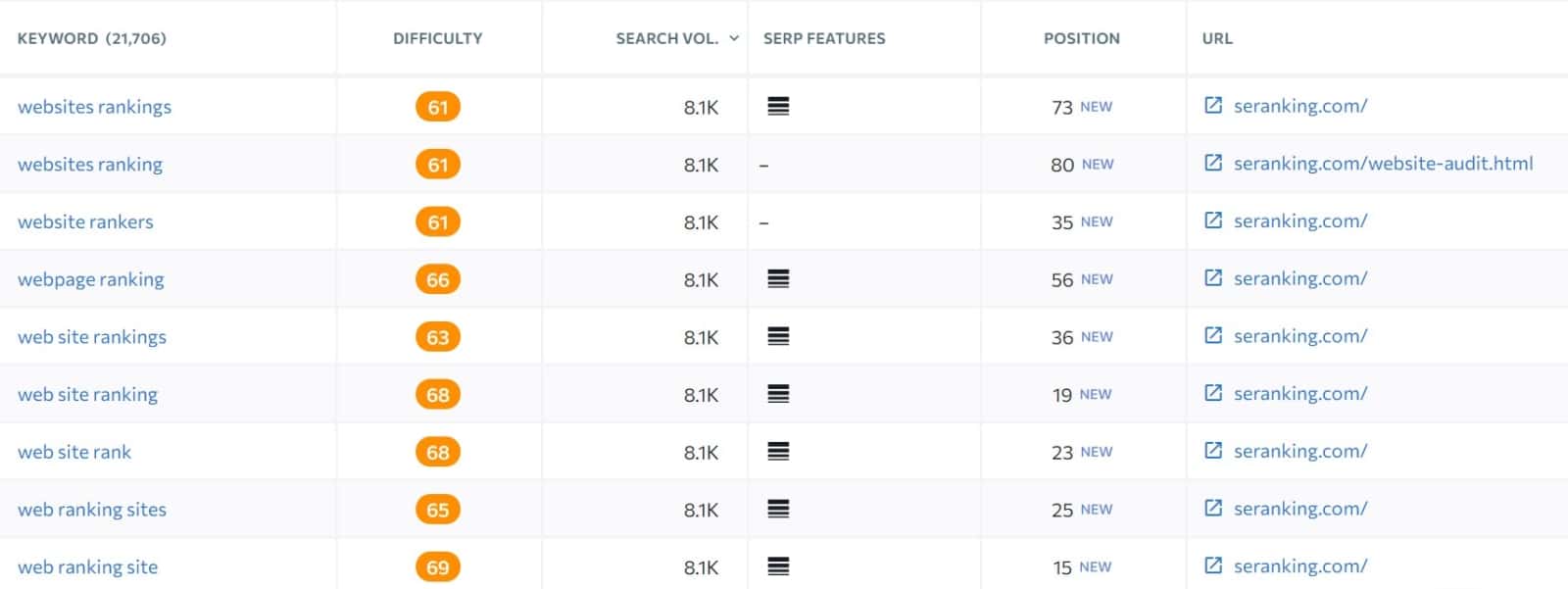
So based on this you can find some really important long-tail keywords or any keywords that you should be targeting to improve your website’s overall ranking, visibility, and traffic.
Step #3: White Hat SEO Techniques for SEO Content
Once you have your keyword ideas list, the next step in optimizing your website for white hat SEO is to focus on targeting your keywords by creating SEO content.
So, let’s have a look at some of the best techniques for white hat SEO content:
Technique #1: Focus on Creating Topic Clusters for Topical Relevancy
Arguably one of the most important white hat SEO content techniques is to focus on creating topic clusters for topical relevancy.
Based on HubSpot’s concept of Topic Clusters, you should be focusing on finding topics that are very close to your business and then creating as much content around the topic to establish topical relevance and own the topic in the search.
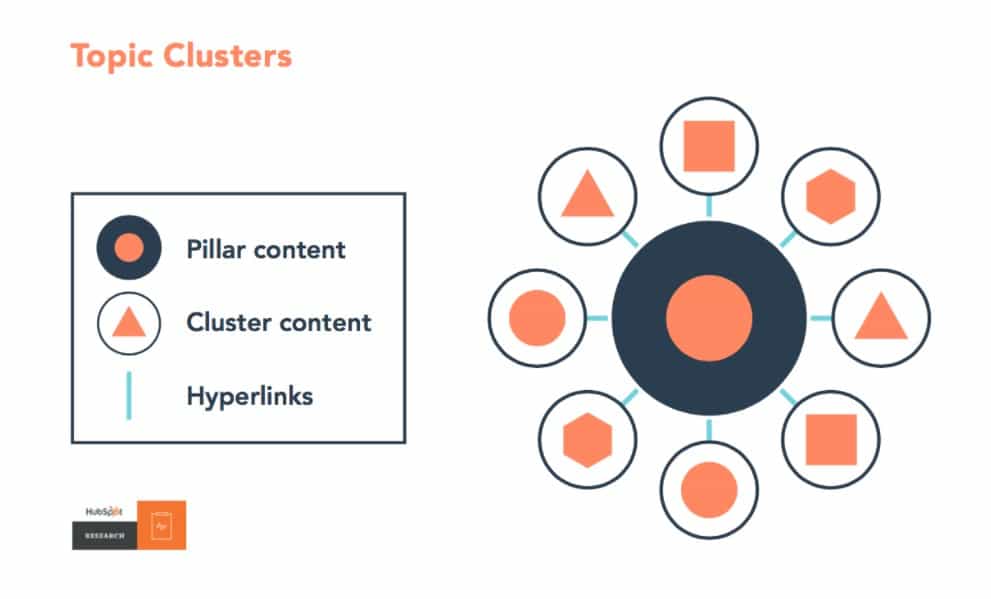
Which means you want to appear for most of the keywords for the topic. Let me explain:
Let’s say you are a specialized shop for gaming laptops. Gaming laptops is one of your main topics because that’s your main product and service if you provide services for gaming laptops. Let’ say you sell gaming laptops and also provide services for gaming laptops.
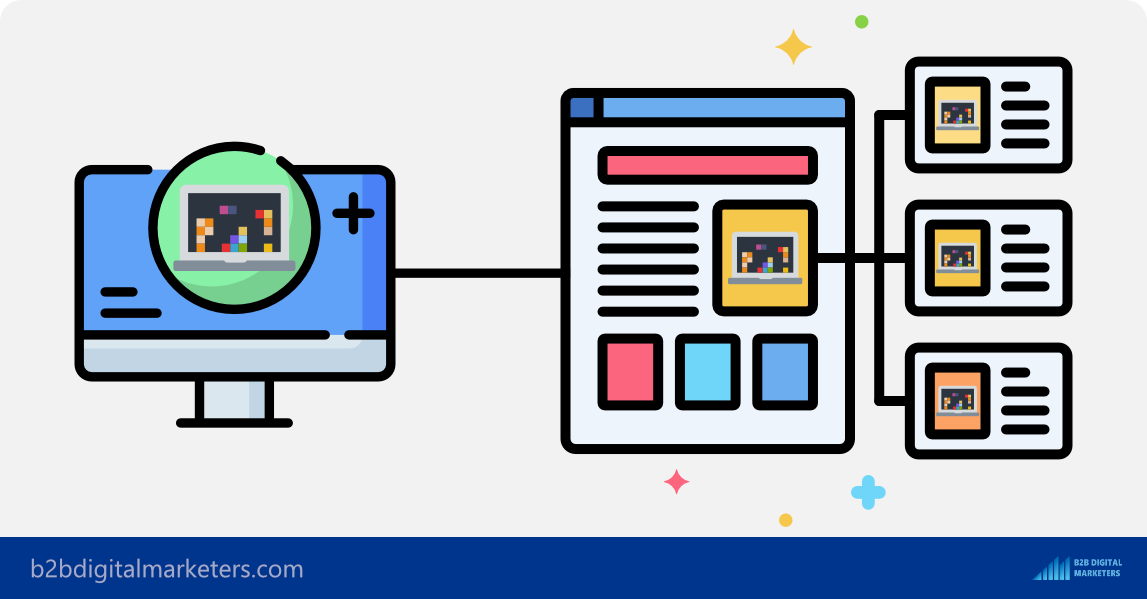
So based on this you would do keyword research to find all the relevant keywords for gaming laptops such as “best gaming laptops”, “cheap gaming laptops”, or “touch screen gaming laptop”.
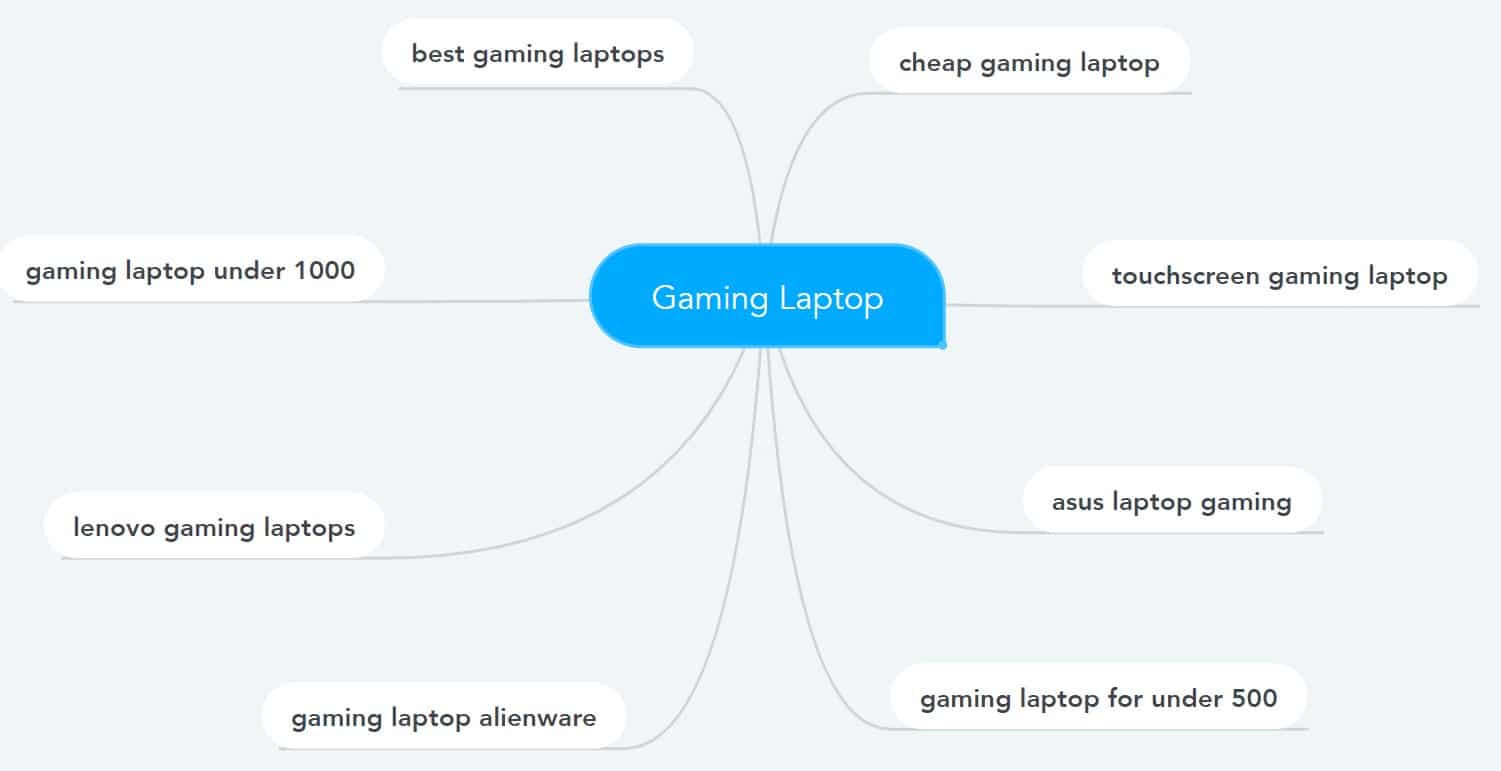
However, the issue with such keywords is that they are mainly commercial, thus, you will be creating mostly product or category pages.
So, what you also want to do, is to find informational keywords as well such as the keyword “gaming laptop for video editing” to drive backlinks, social share, and improve your overall authority.
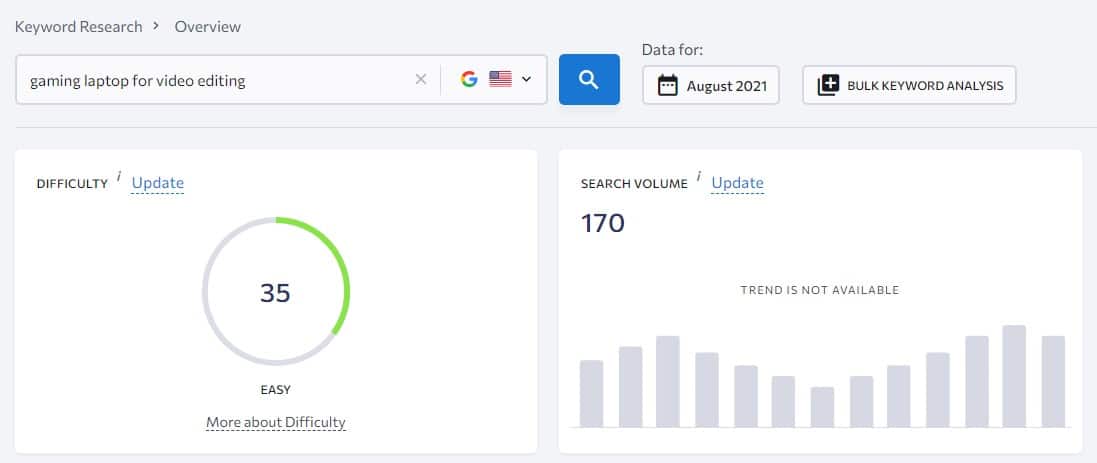
Remember, you want to have content across all the stages of the buyer journey.

Technique #2: Follow Search Intent
Another important white hat SEO technique is to follow search intent for every targeted keyword.
Search intent means the reason behind the searcher query and what type of content the user is looking for.
As I have already shown you, there are 4 types of search intent:
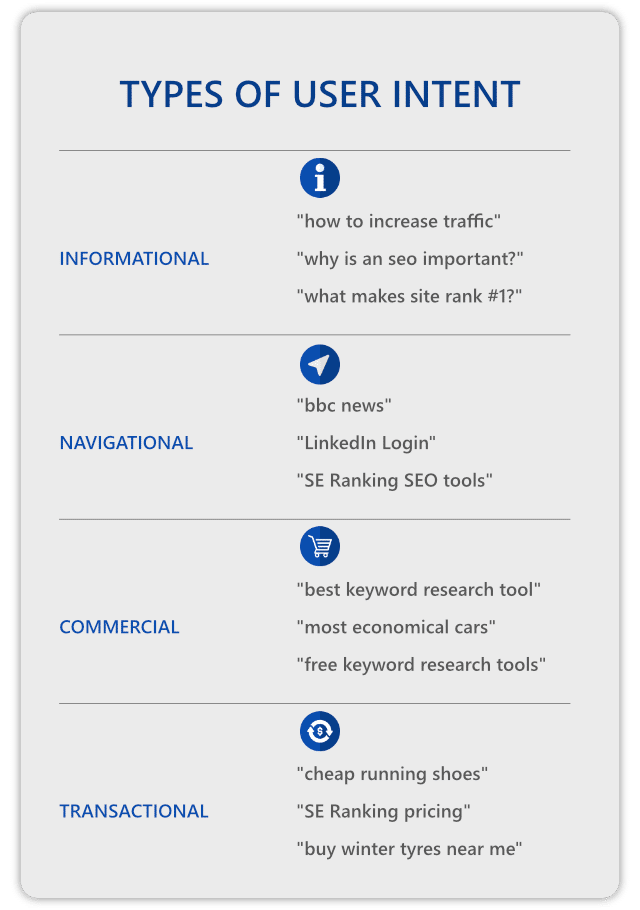
- Informational
- Navigational
- Commercial
- Transactional
And generally, 99% of keywords will fall under these four types of keywords search intent. So, it is important to create the right type of content based on the keyword search intent, let me show you why:
If you are searching for the keyword “best gaming laptops under 500” then you probably won’t want an article about best gaming laptops under 500 or even a single product page, but you expect a page with a list of recommended gaming laptops under 500 with basic information like why, specs information, and where to buy it.
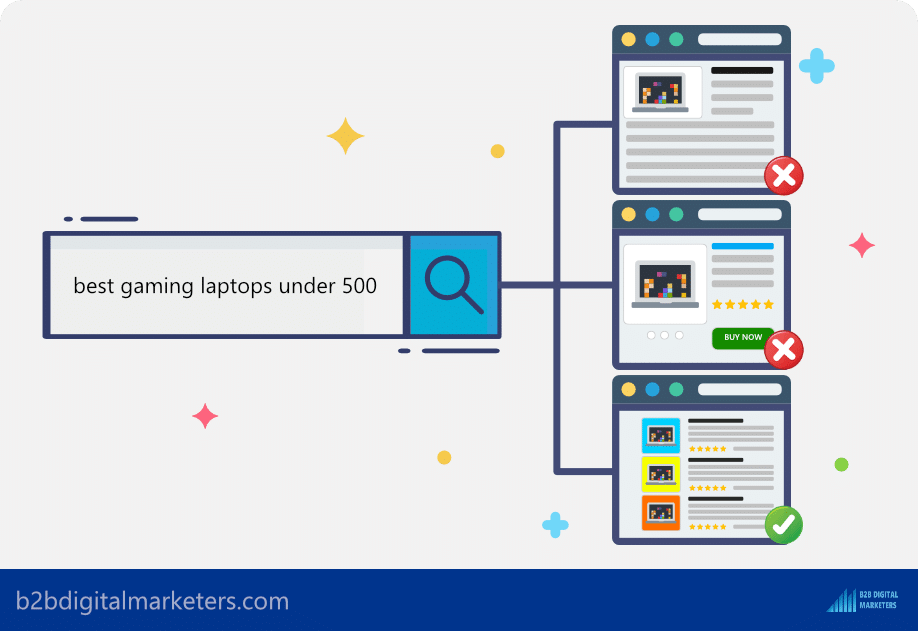
And of course, if you create a type of page users aren’t looking for, they will not click or quickly bounce back which will push your page down the drain and those pages that meet the searcher intent will be promoted by search engines as that’s what users are looking for.
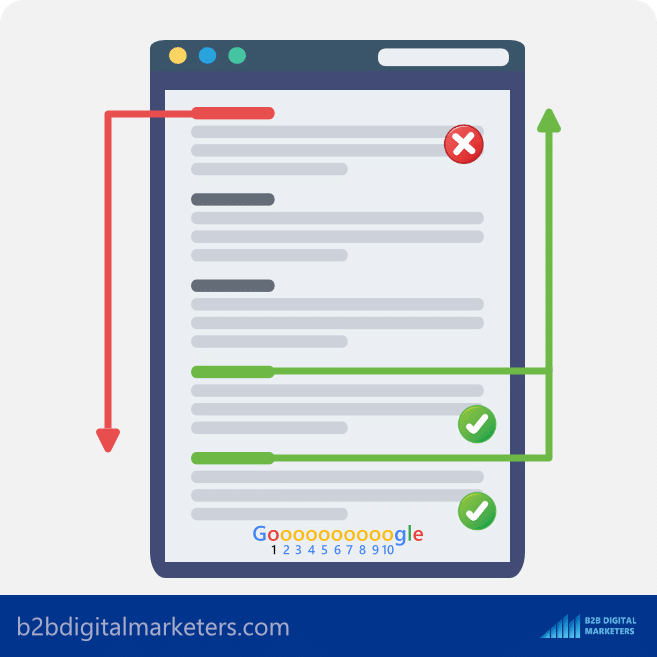
So, to find search intent is relatively easy, you just have to look at what pages are ranking on the first page of SERPs for your targeted keyword and then follow the dominant type of content.
For example, let’s find out the search intent for the keyword “best gaming laptops under 500” by popping it into the keyword research tool and look at the Organic search results section.
I honestly prefer to analyze search intent via keyword research tool as I can select my targeted location and get the exact results the locals get while using my own browser I would get “personalized” search results based on my location and settings.

So, as you can see here, from just looking at the titles of top-ranking pages, it will be a page with a list of gaming laptops under 500.
And when I open a few results, that’s exactly what I am seeing, a list of laptops, with basic information like what, why, and where to buy it.
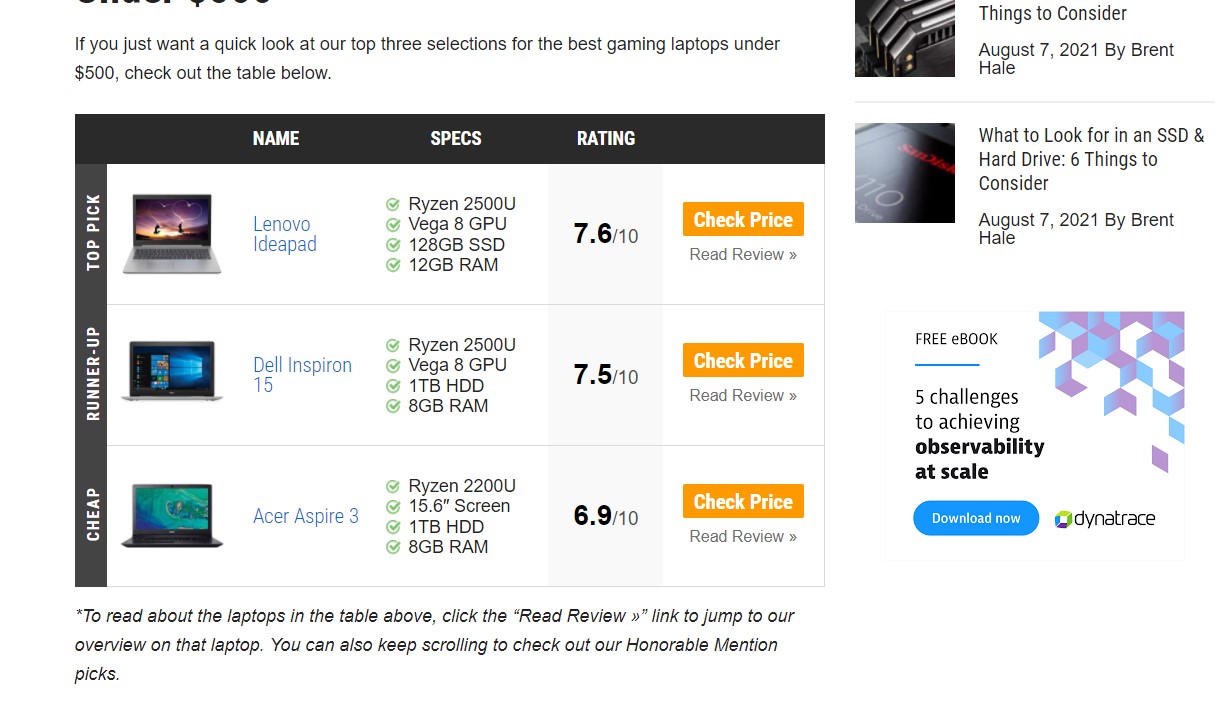
So, always follow the search intent for every keyword you are going to target. Remember, Google spends billions of dollars to figure it out, so what makes you think better?
Technique #3: Create Scannable Content
Another important white hat SEO technique is to create scannable content so people can get important information without reading the whole article.
According to research by Nielsen Norman Group showed that only 16% of people read word-by-word and from watching countless hours of session recordings from tools like Smartlook I would say it is less than 10%.
And this was in 1997, new research in 2020 proves, that people did not change and people read online the same way.
So, from this study we can pick up a few important pieces of information to improve the scannability of our content and provide the needed information faster, thus improve the user experience:
- Using clear, noticeable headings and subheadings to break up content and label sections so that people can scan to find only what they’re most interested in.
- Placing information upfront(in other words, “front-loading”) in the structure of our content, as well as in subheadings and links, to allow people to understand the message quickly while scanning.
- Employing formatting techniques like bulleted lists and bold text allow the eye to focus on the most important information.
- Using plain language to keep content concise and clear.
(Source)
Don’t expect people will read your landing page, blog posts, emails, social media, and anything else, but they will skim it. So, help me to do that and get the information and they will come back for more.
Step #4: White Hat SEO Techniques for On-Page SEO
The next step in optimizing your website for white hat SEO is to use the right on-page SEO strategies allowed by search engines.
There are a lot of white-hat SEO techniques for on-page SEO and if you want to learn everything about it, you can watch my video or visit my on-page SEO guide.
Or use my on-page SEO infographic as a checklist.
However, let me share with you the most important white hat SEO techniques for on-page SEO:
Technique #1: Have Only SEO Images
The first technique where I still see people make a lot of mistakes is not fully optimizing pictures for search engines even though it is relatively easy to do with today’s technologies and it can have a huge impact on your website in terms of traffic.
In fact, images are the new keywords as 62% of Gen Z and Millennial consumers want visual search more than any other new technology, and Image search represents about 30 % of all queries generated across the top 10 US web search properties.
So here are some of the best practices to optimize your images:
- Image names, titles, and alt texts are best when they’re short, relevant, but descriptive with keyword and/or LSI keyword included.
- Always compress your pictures and create responsive images. If you are on WordPress, you can use plugins to do that for you.
- Create an image sitemap to get your images rank faster and improve your content visibility.
- Enable lazy load, so pictures load only when visible on the screen.
- Serve images via CDN (Content Delivery Network).
- Choose the right formats for your images like PNG, JPG, and WebP.
SEO images are not hard at all, just some people find it annoying to name every single picture and write a short description. Especially if you are using a lot of images like me with over 50 images per blog post it can be tedious, yet super important.
Technique #2: Title Tag and Meta Description Optimization
The second super important and often underestimated white hat SEO technique for on-page SEO is title tag and meta description optimization.
Title tag and meta description are one of the sneaky ranking factors. Google says, they don’t use keyword usage in the meta description as a ranking factor and title tags are major factors in helping search engines understand what your page is about.
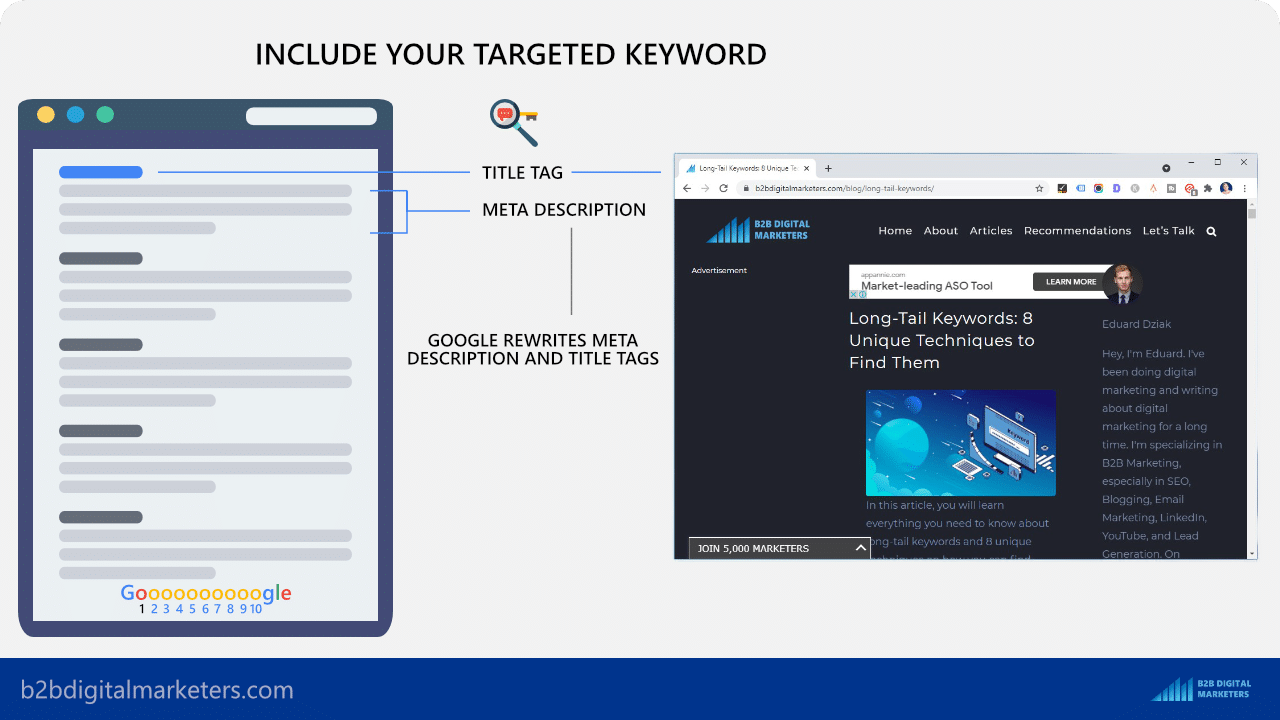
And in both ways, Google rewrites meta descriptions and also title tags to deliver a more personalized approach based on the query and content on the page.
However, both these influence one of the most important aspects and that is whether people find your title tag and meta description click-worthy or not, which means a title tag and meta description can make or break your traffic.
Therefore you should optimize your title tags and meta description for every of your page. So, here are some of the best practices for title tags:
- Include your targeted keyword.
- Use between 60-70 characters preferably.
- Place keywords towards the beginning for UX.
- Keep it unique in the SERPS, don’t copy.
And some of the best practices for meta description are:
- Include targeted keyword and highest search volume LSI keyword.
- Try to stay between 50-160 characters. Keep it short and sweet.
- Write meta description as ad copy.
- Test having meta description and not having for your pages.
Technique #3: Keyword Descriptive URL
Alright, another important white hat SEO technique for on-page SEO is to use keywords within your URL.
Google uses your URL for SEO to better understand what your page and website is about and having a long URL, with weird stuff in it will make it more complicated just like this example:
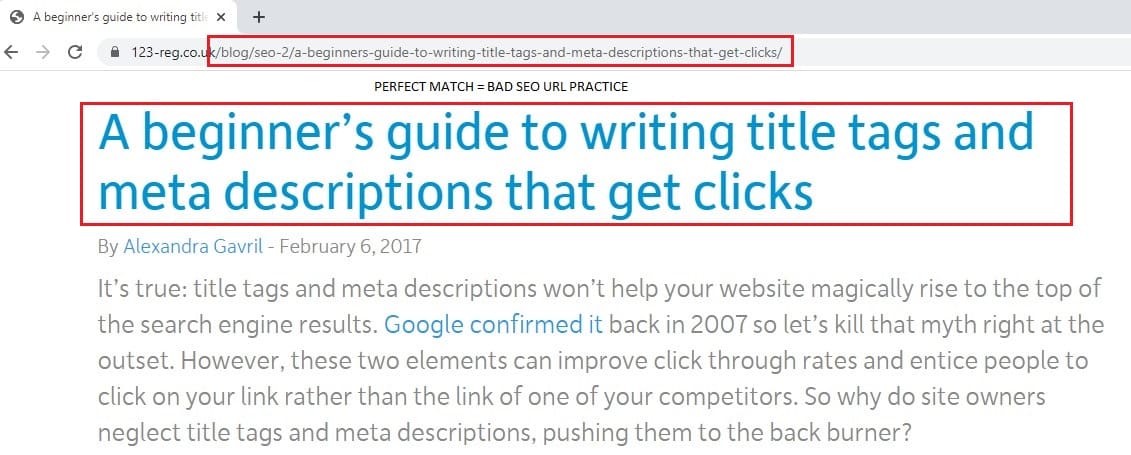
As said by Google:
“A site’s URL structure should be as simple as possible. Consider organizing your content so that URLs are constructed logically and in a manner that is most intelligible to humans.”
So, you want to avoid any undescriptive, non-making sense URL, that humans and search engines can’t read.
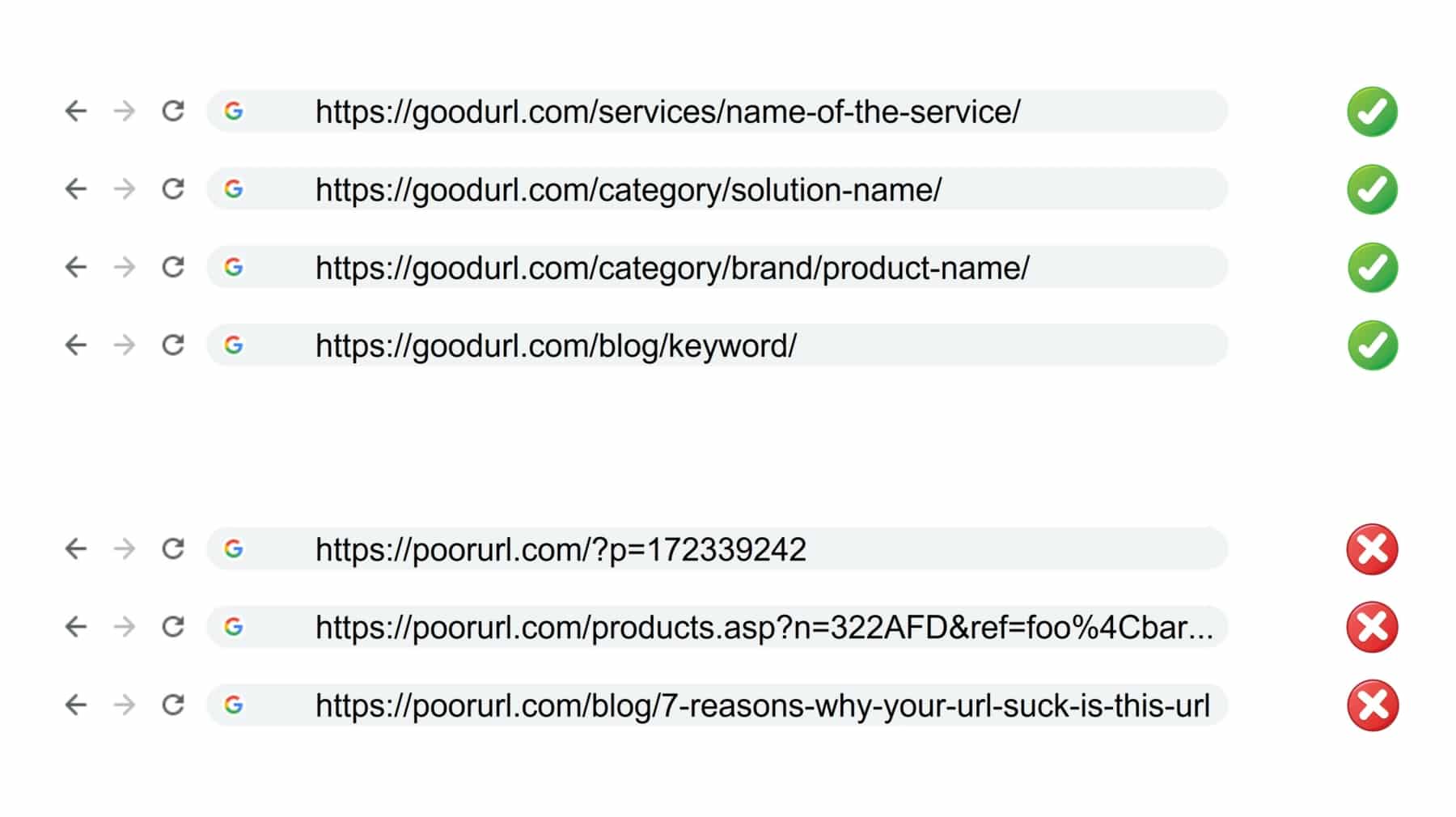
For example, depending on the purpose of the page I will categorize the page under different categories. If I am creating a service page, then it should be under the URL folder services so search engines and humans can understand that is my service page.
If I am creating a solution page, then I put it under the category solutions and so on.
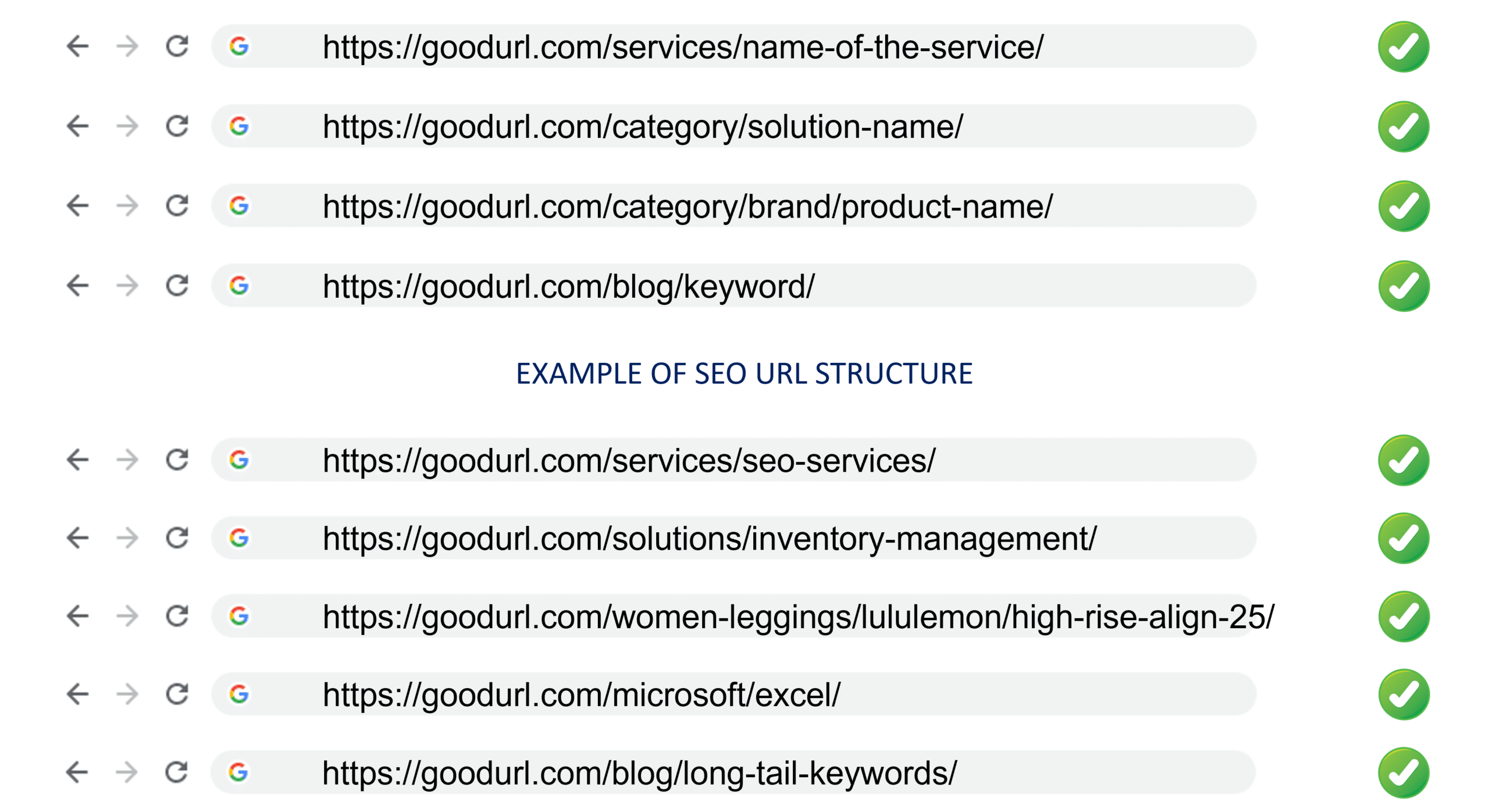
So, when you look at my blog posts, you will see I am using a very simple URL structure. Basically, I just pop in my targeted keyword and nothing else.
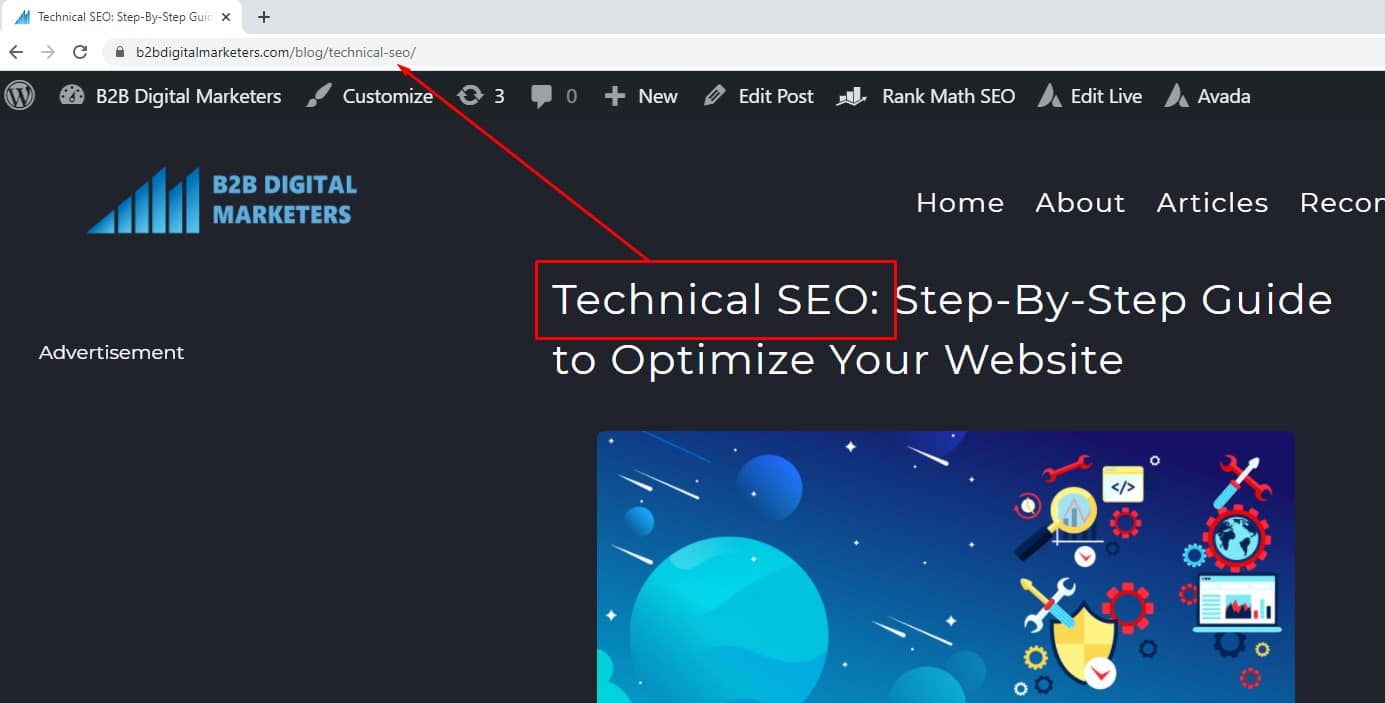
Technique #4: Optimize Pages with Internal Linking
Another super important white hat SEO strategy for on-page SEO is to optimize your pages with an internal linking strategy.
Internal links are the #1 way how Google discovers your pages and the internet and having a properly optimized internal linking strategy for SEO will boost your website visibility and ranking.
In fact, when I had around 60 articles on my website I was only generating 1,500 impressions a day from Google search. However, once I connected all my articles with internal links I saw exponential growth in my impressions and traffic to about 20,000 impressions a day.

And even my ranking became more stable after using internal linking as Google could better understand my website and its content.

So, ensuring all your pages are properly optimized with internal links will have a major impact on your website and you should start doing it.
Step #5: White Hat SEO Techniques for Link Building
The next step in white hat SEO after optimizing your SEO content with on-page SEO is to build high-quality backlinks with white hat SEO link building strategies as link building benefits are enourmous.
There is no doubt that links are a big part of Google’s ranking algorithm. In fact, they even state on their website How Search Works:
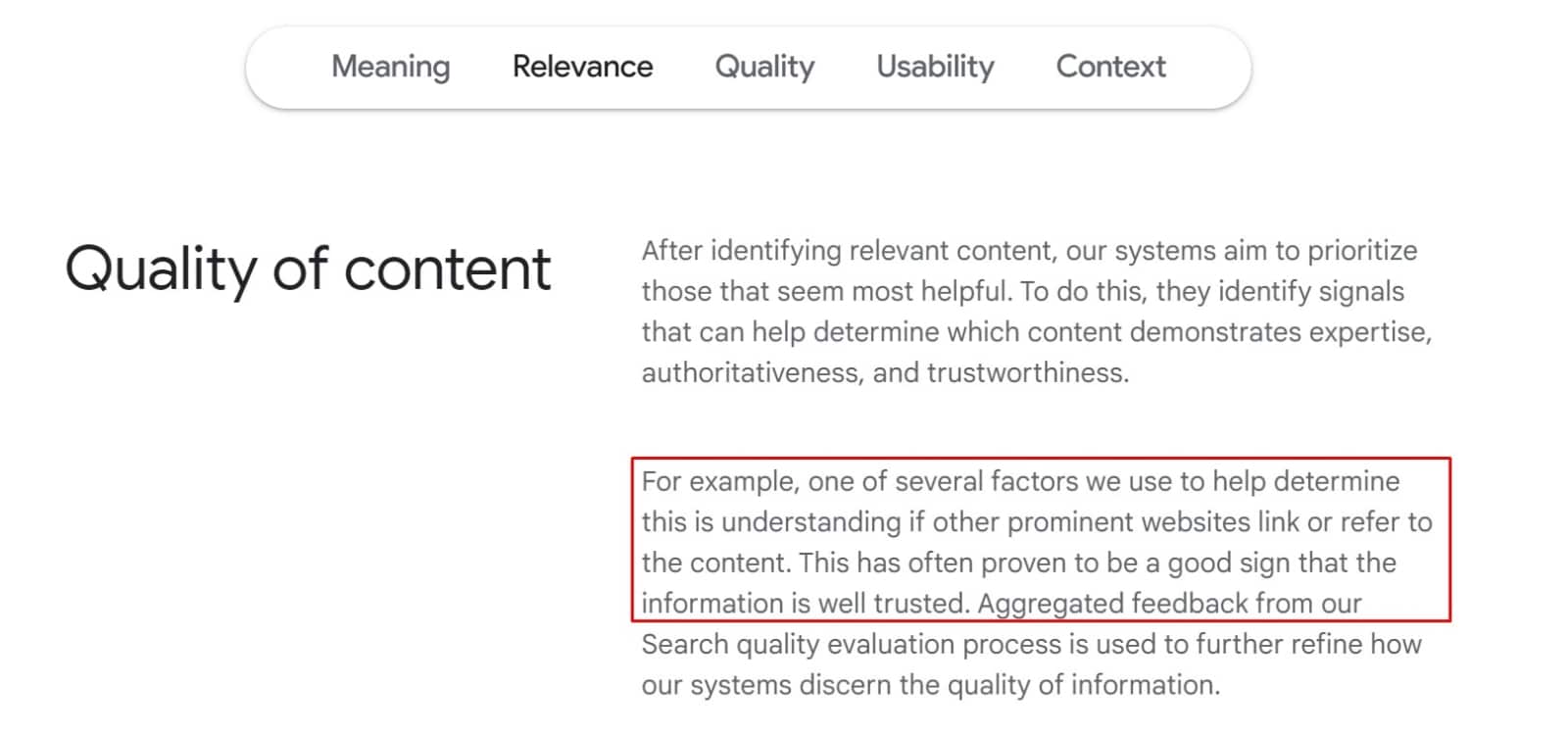
For example, one of several factors we use to help determine this is understanding if other prominent websites link or refer to the content. This has often proven to be a good sign that the information is well trusted.
So, here are four ways how you can build backlinks the right way
Technique #1: Skyscraper Link Building Technique
Definitely one of the most white hat SEO strategies is the skyscraper technique.
The skyscraper technique is all about creating a better piece of content than your competitors and then promote it to people who are linking to a similar piece of content. Let me show you:
Step #1: you need to find relevant keywords that you want to target that have already generated a lot of high-quality backlinks. For example, in my case, this keyword could be “long-tail keywords”.
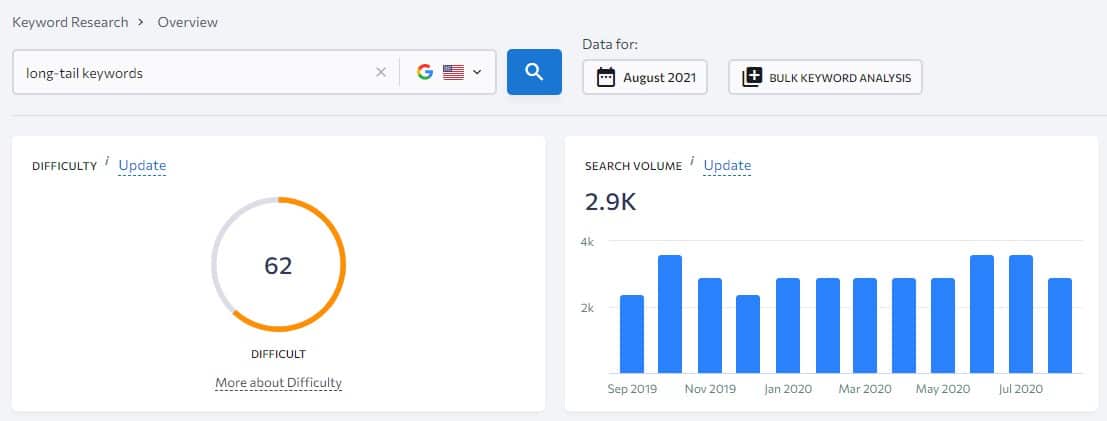
Then I have analyzed the top-ranking pages using SE Ranking Backlink Checker to see how many links each URL generated.
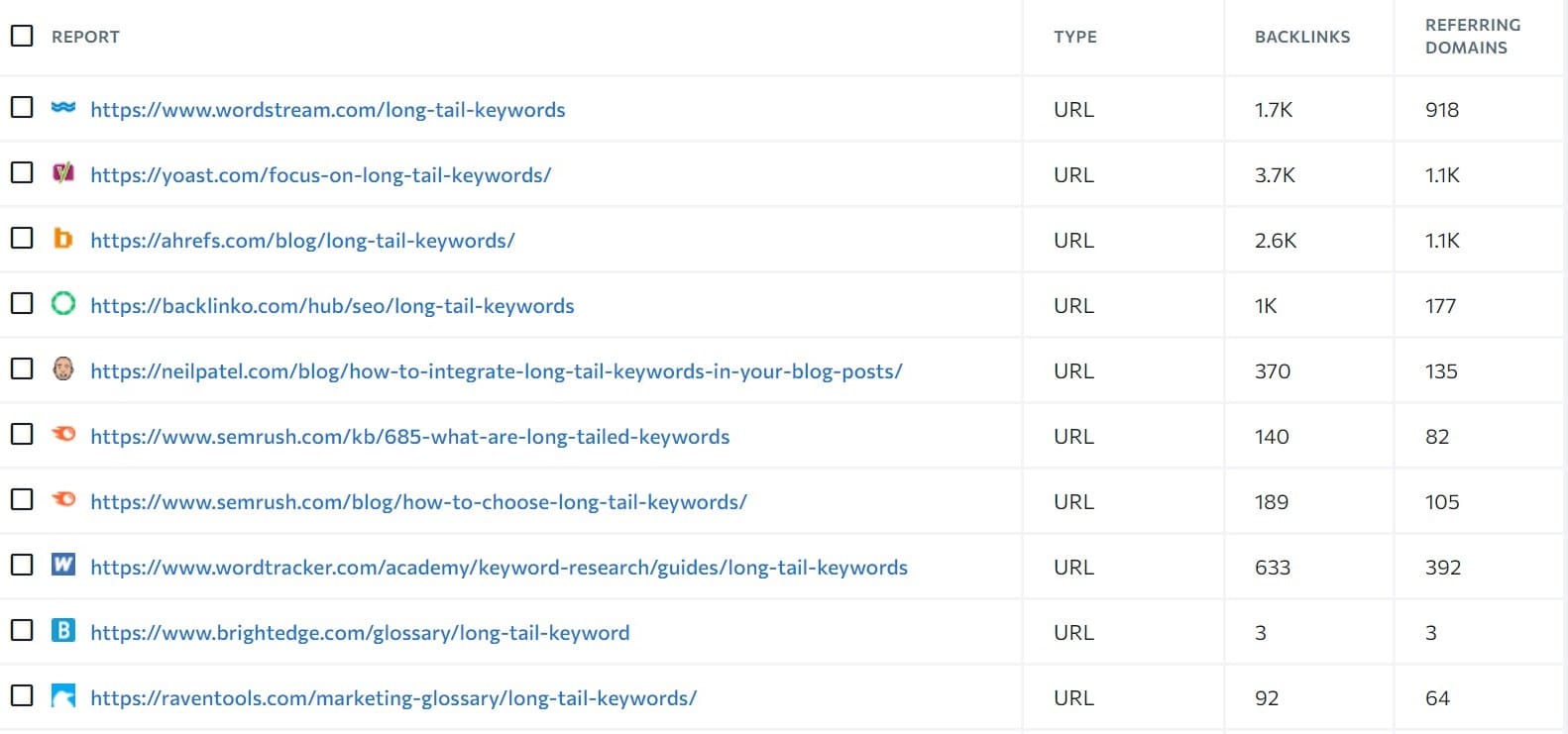
And based on the number of backlinks I am positive that this is a juicy keyword that can generate a lot of backlinks.
Step #2: I will have to generate better, more thorough, detailed, and in every way more superior content than my competitors.
Step #3: I will extract all the domains that are linking to my competitor’s URLs on my target.
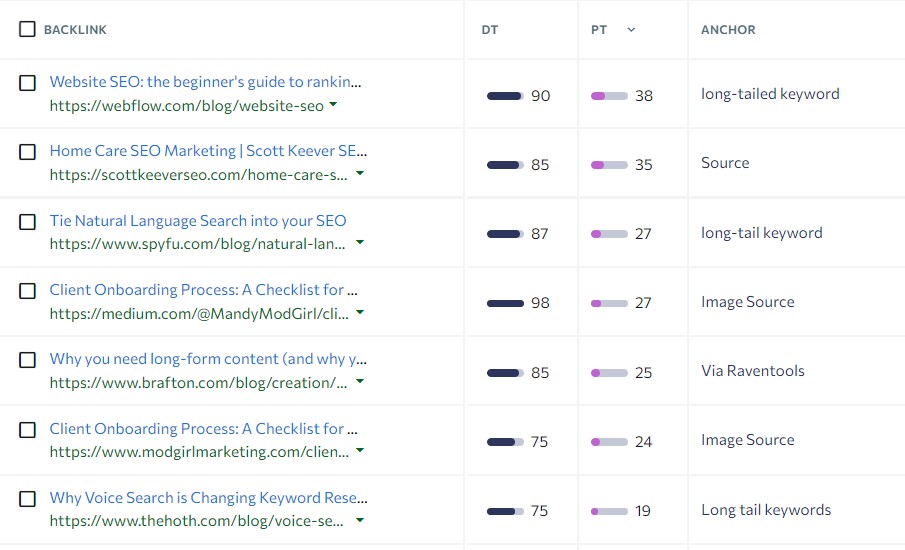
And let them know about my new, fresher, and more comprehensive piece of content and if they like it they will link to my content. And that’s it. However, I recommend you to check out the full guide from Brian Dean.
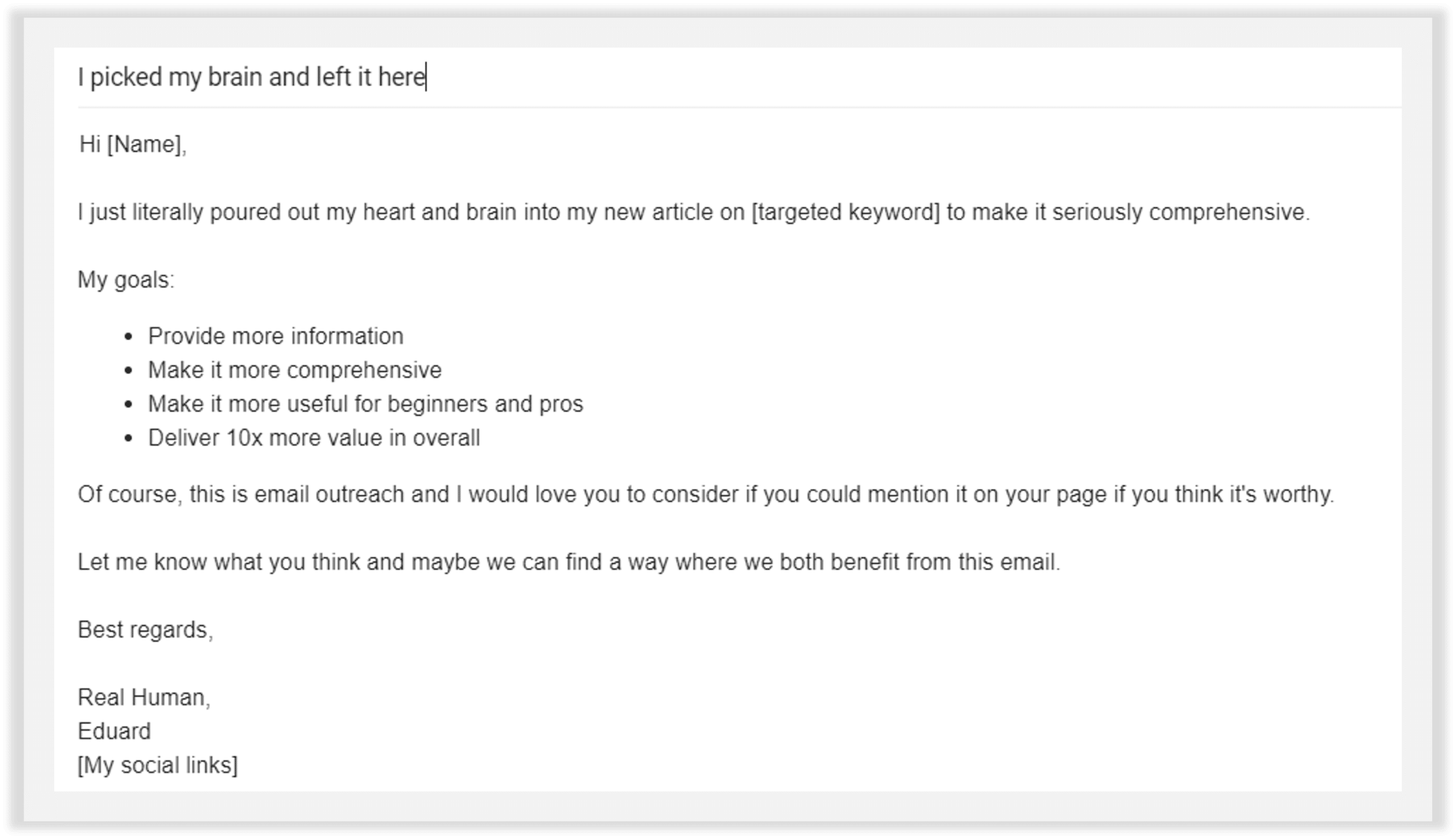
Remember, blogger outreach to get links to your high-quality content is fine as said by John Mueller.
Technique #2: Infographic Link Building
Another great white hat SEO link building strategy is infographic link building.
This method is much easier than the first one and can generate great results as often people are happy to share great infographics on their website.
So let me show you how:
Step #1: Find a topic that can be generated into an infographic. Often these topics are step-by-step, checklist, listicle, vs or data. All these can be generated into beautiful infographics.
For example, a little while ago I wrote articles for on-page SEO and off-page SEO so it was only natural for me to create an infographic to create “VS infographic” for on-page SEO vs off-page SEO.
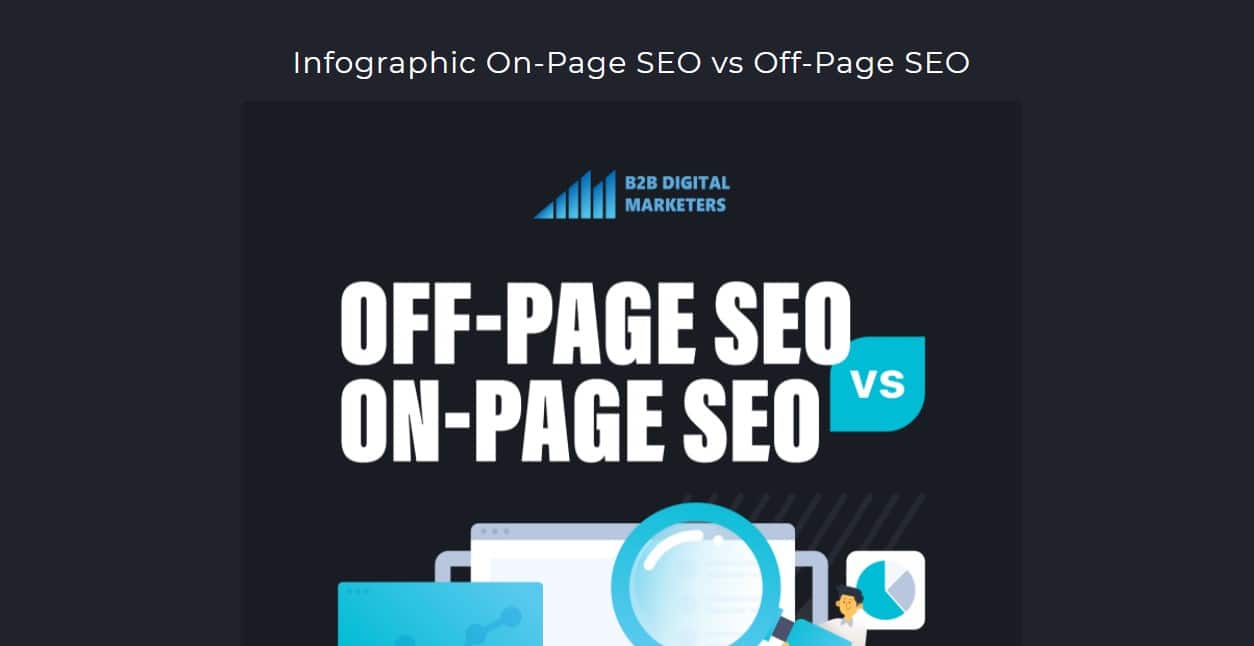
Step #2: is to create your beautiful infographic. Well, I am not sure with you, but I am not really a master in design particularly, especially in infographics. So paid like US $30 to a freelancer on Fiverr and within a few days, I had a nice infographic based on my description.
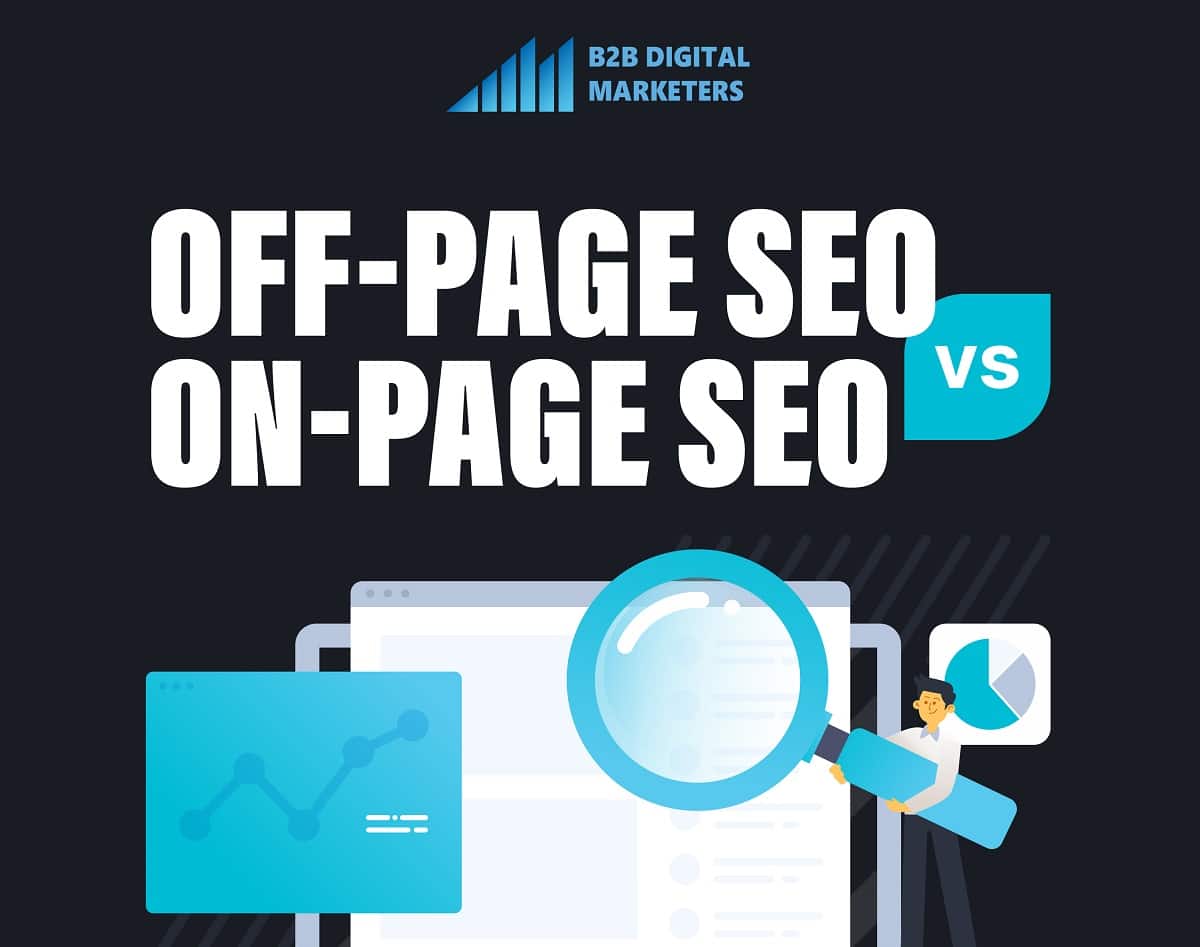
Step #3: Is send an email to marketing, SEO, and other related blog-owning websites and let them know about my new infographic and that they can use it if they want, plus I am happy to write unique 300 words content for their site.

Technique #3: Industry Study and Research for Link Building
Another great way of building backlinks in white hat SEO fashion is to create industry studies and research publications.
This is one of the most difficult and expensive link building strategy, however very effective if it is done correctly.
For example, a study by Wordstream on the conversion rate benchmark has generated over 2,700 backlinks from over 1,400 domains.
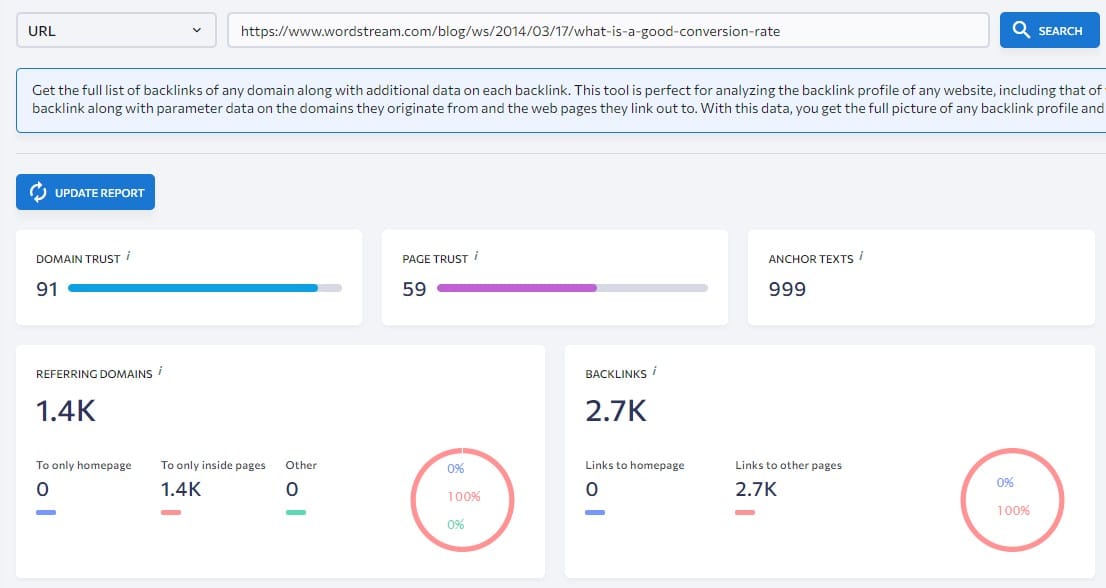
Or study by Backlinko on Google Search Results has generated over 14,400 backlinks from 5,500 domains, that’s insane!
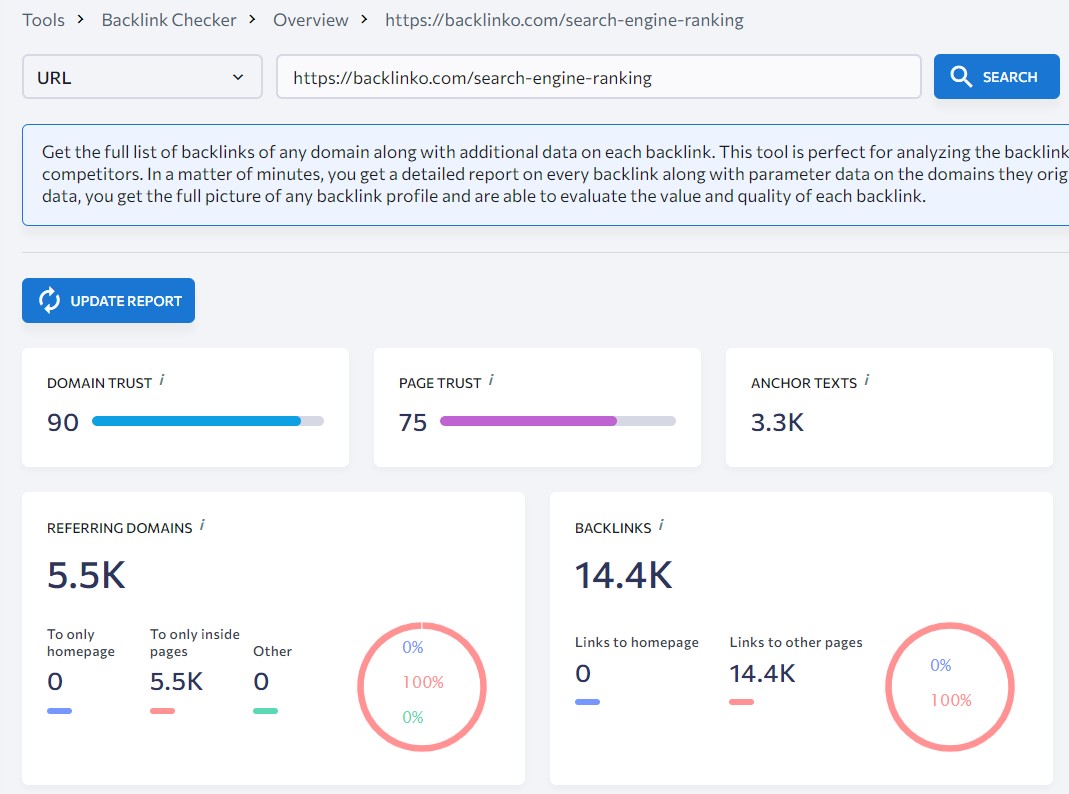
With that, they can be very expensive to pull out or time costly, but the reward can be far greater than with any other link building strategy.
Technique #4: Reply to HARO inquiries
Another white hat SEO-friendly link building technique is HARO (HelpAReporterOut).
This strategy is as easy as it gets, super beginner-friendly and you can build some powerful backlinks to your site.
In fact, I built HARO links from websites like MouseFlow.com,
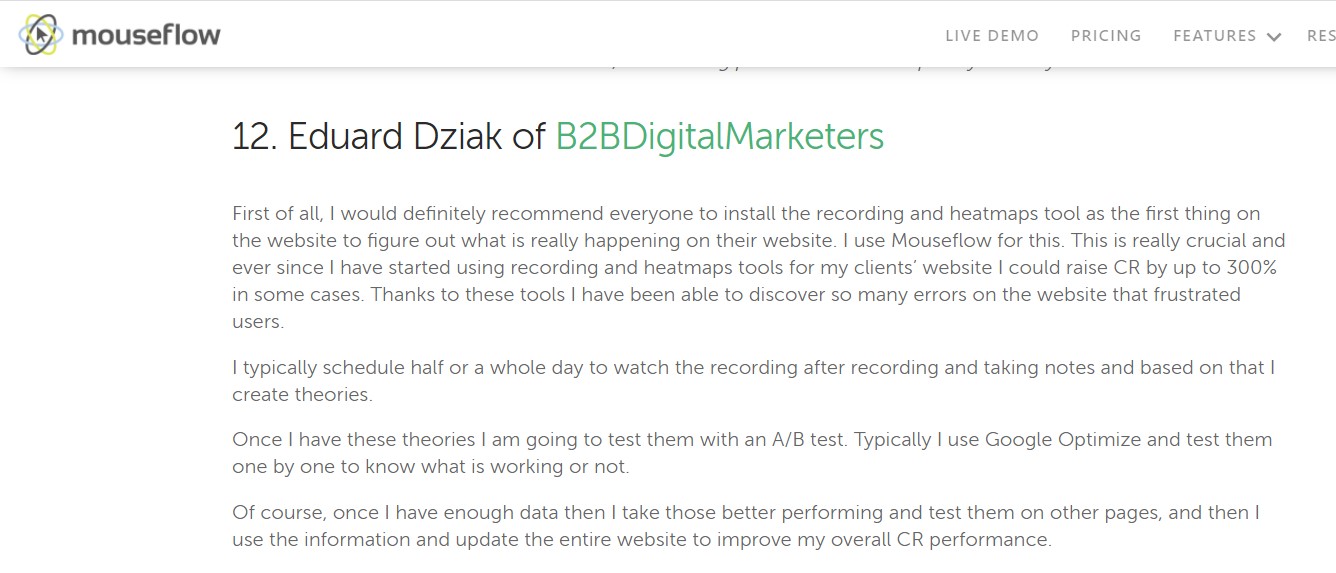
Or MarketingSherpa.com.
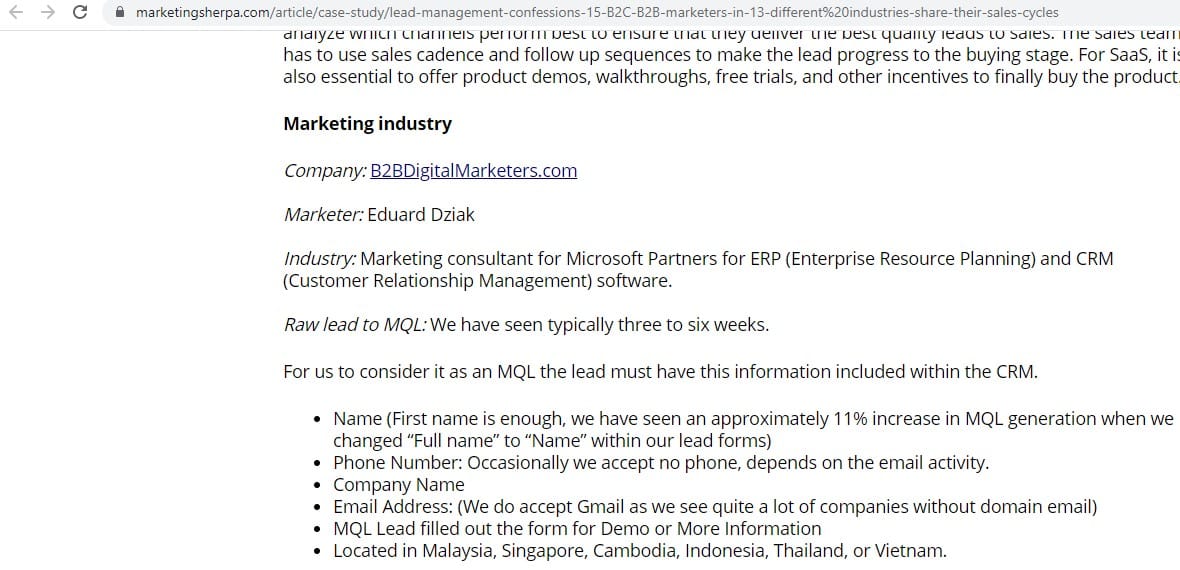
And all these links did not take longer than 20-30 minutes to reply to HARO inquiries. You just need to sign up at their website.
And you will receive HARO inquiries from HARO, 3x a day, Monday to Friday.

And then you just find relevant inquiries to your business and answer journalist questions as best as you can and typically 1 in 5 will link to you, that’s around a 20% conversion rate.
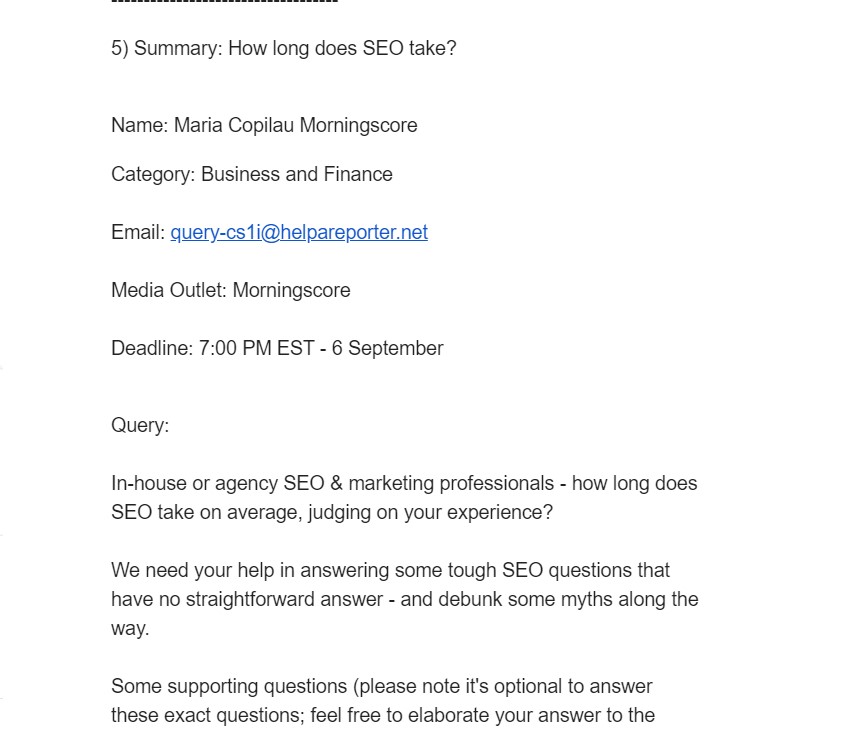
Super friendly, yet very powerful especially at the beginning when you are starting with a new blog or website.
Technique #5: Guest Blogging
And the last link building strategy I want to mention is guest blogging.
However, is that white hat SEO technique for link building?
No, it’s not and according to John Mueller, Google already devalues them, because they result in unnatural links.
However, that does not mean you should totally disregard links from guest blogging especially when you are starting as this strategy is one of the easiest ways to get it. Let me show you:
Step #1: You need to find relevant blogs within your niche or close niche that runs blogs and accepts guest blogging. You can use the SE Ranking Competitors research tool that gives you a list of hundreds of your competitors or competitors of an analyzed domain.
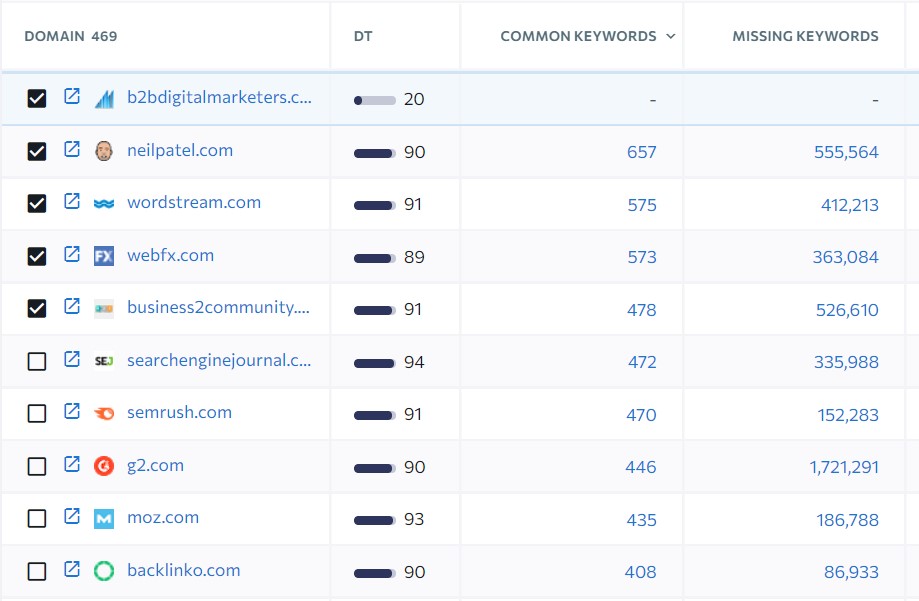
You definitely want to avoid the old way of searching for guest blogging opportunities using search operators. Any site that publicly display they accept guest blog will be quickly discovered by Google and will be devalued.
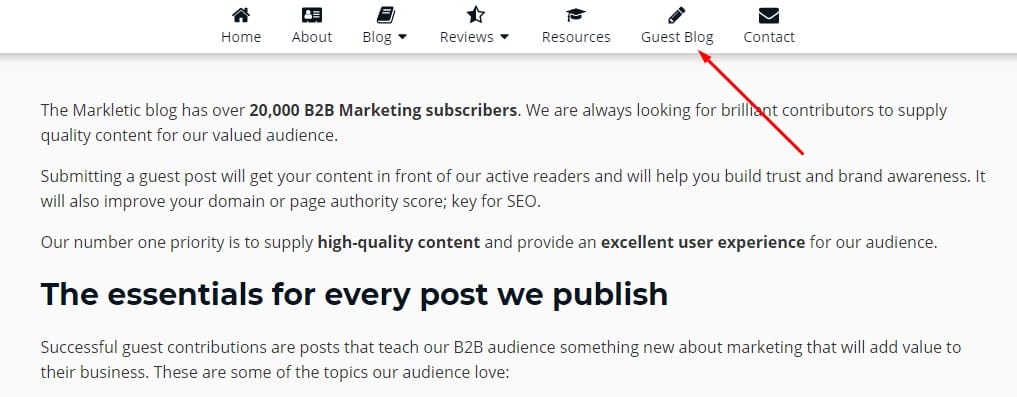
Therefore, at first, any site that is running a blog in your niche or industry without showing they accept guest contributors is your potential prospect.
Step #2: Once you have a list of your prospects you need to write an email outreach. However, don’t be like these guys.
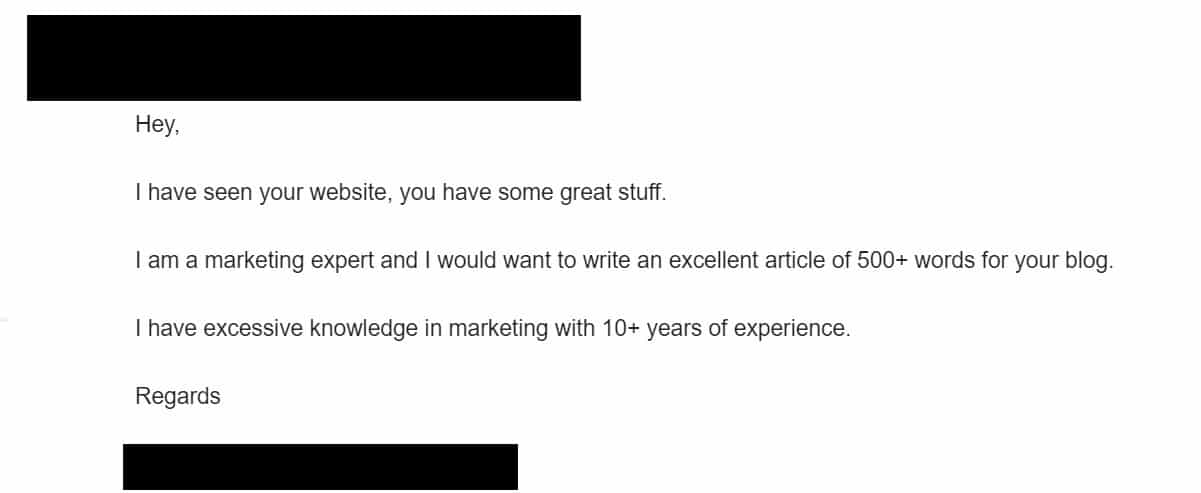
Instead, you want to be personalized and include their real name, missing keywords by using content gap analysis and offer them that you can write an article to target this keyword.
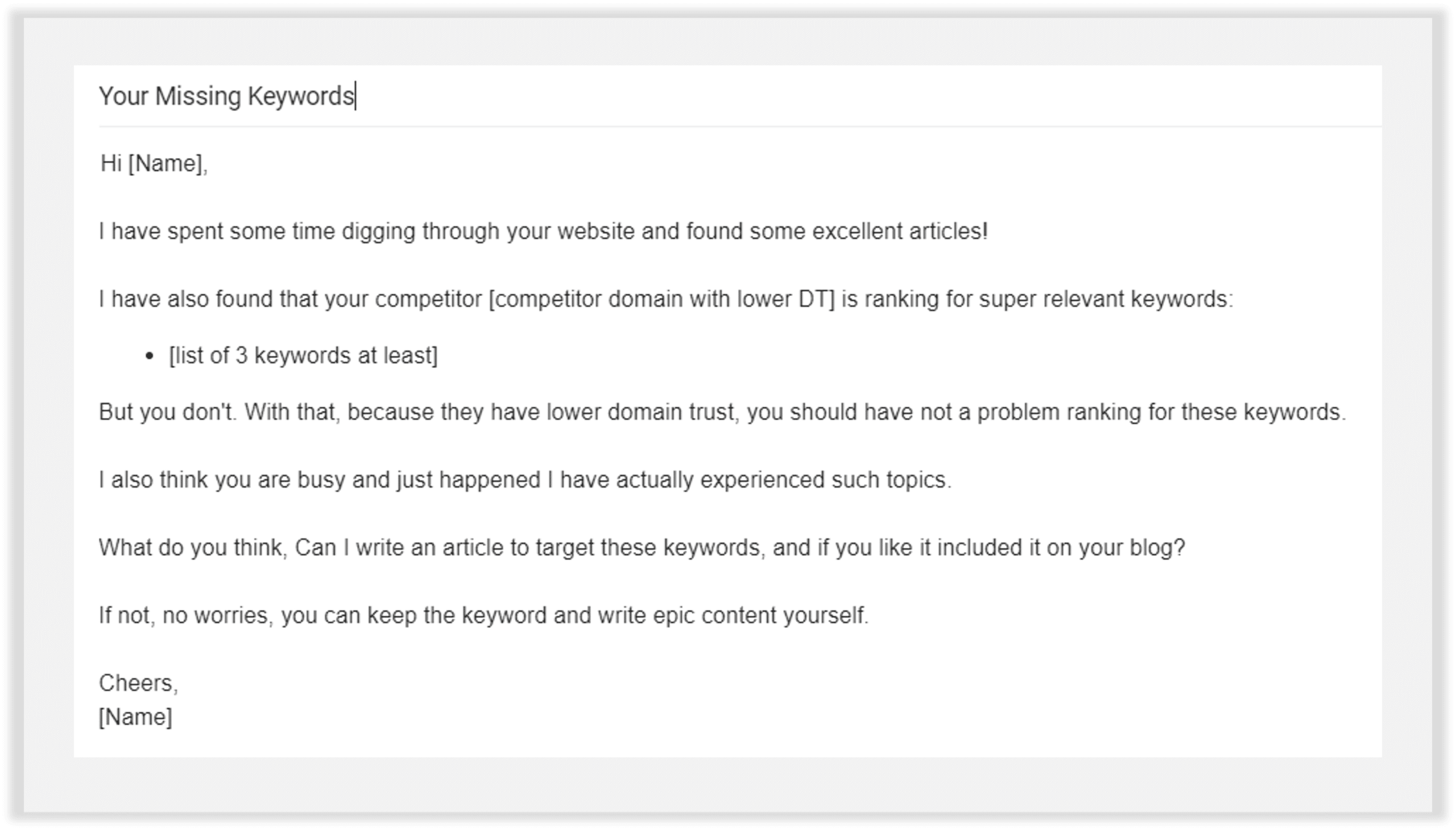
Boom, just like this you have super personalized blogger outreach and if they see the keywords important for their business they sure want to target the keywords.
Final Advice
So these are the most important white hat SEO techniques and tactics that you can apply for your website.
And don’t worry if you feel overwhelmed. Just follow this article as a checklist and soon you will get hang of it and be ready to learn new white hat SEO techniques.
I am also expanding the article so check it from time to time to learn new practices and techniques that you can right away apply on your website.
Having question? Leave it on my video on White Hat SEO and I will do my best to give you advice!
Related Articles:
- Semantic SEO: Ultimate Guide (2023)
- Off-Page SEO Activity List: Increase Online Reputation in 2023
- Effective Marketing SEO Funnels: Ultimate Guide [2023]
- B2B SEO Strategy for 2023: 8 Steps to Effectively Generate Leads and Organic Traffic
- Ultimate SEO Checklist That Actually Works in 2023
- Effective SEO Audit to Generate Organic Traffic and Leads for Your Business in 2023
- How Long Does It Take to Learn SEO?
- Link Building Mistakes to Avoid
Also, check out our SEO hub page to find all our SEO resources.
Disclaimer
Some pictures are coming from Freepik and Flaticon and some of my links are affiliate links, which means if you purchase something, I might get some small commission as a reward for reference. Of course, I am actively using all these services and products, and I only affiliate products or services I have full trust in their quality!
Support the B2BDigitalMarketers
Hey, Eduard here.
As a solo blogger with limited resources, I need your support to keep creating in-depth SEO content like this. Please consider joining my Patreon community to help this site grow.
Your pledge – no matter how small – will enable me to dedicate more time to sharing actionable tips and strategies. With your help, I can take this project to the next level and really make a difference for other SEOs and marketers.
I would sincerely appreciate you joining me on this journey as a founding patron. Together, we can build an amazing resource hub. Hope to see you on the inside – thanks for your trust and support!








